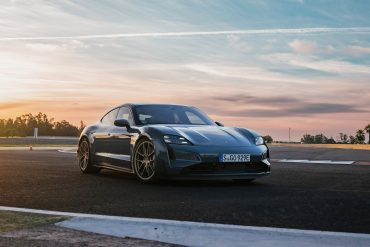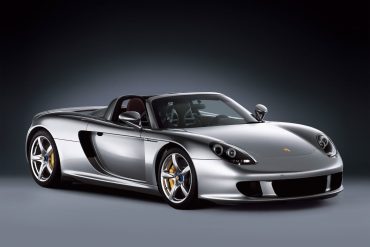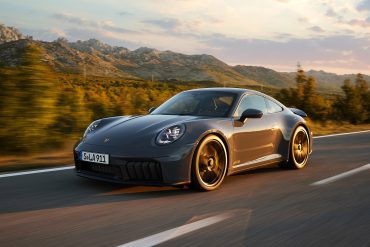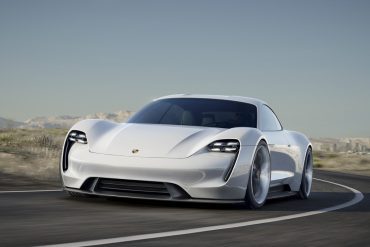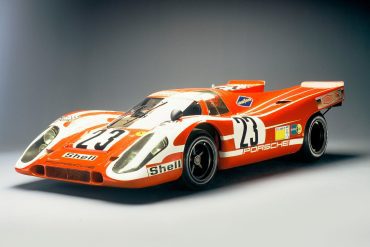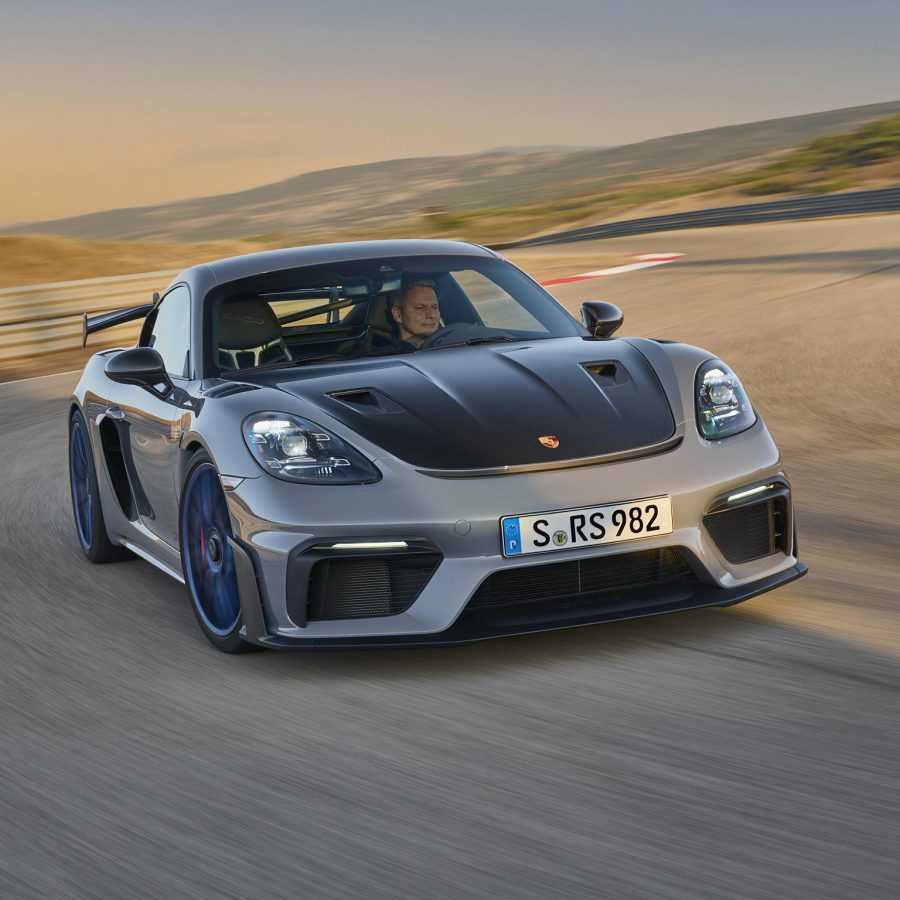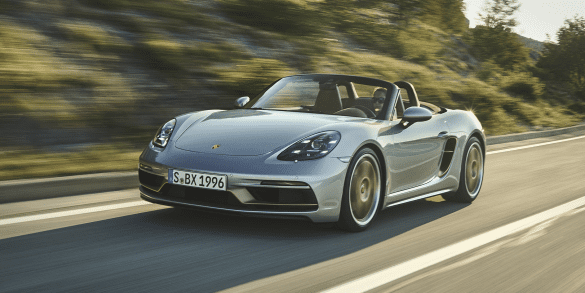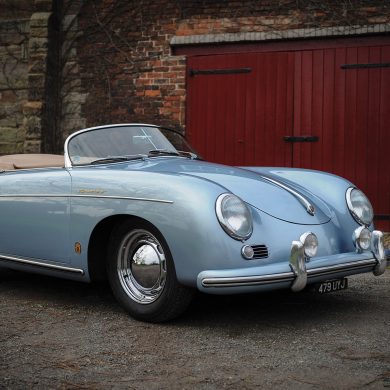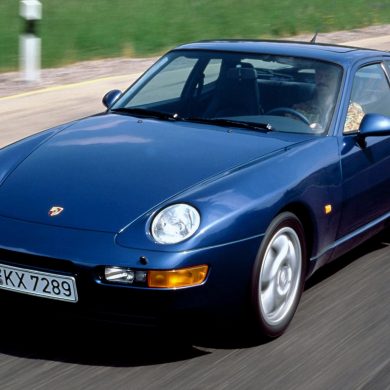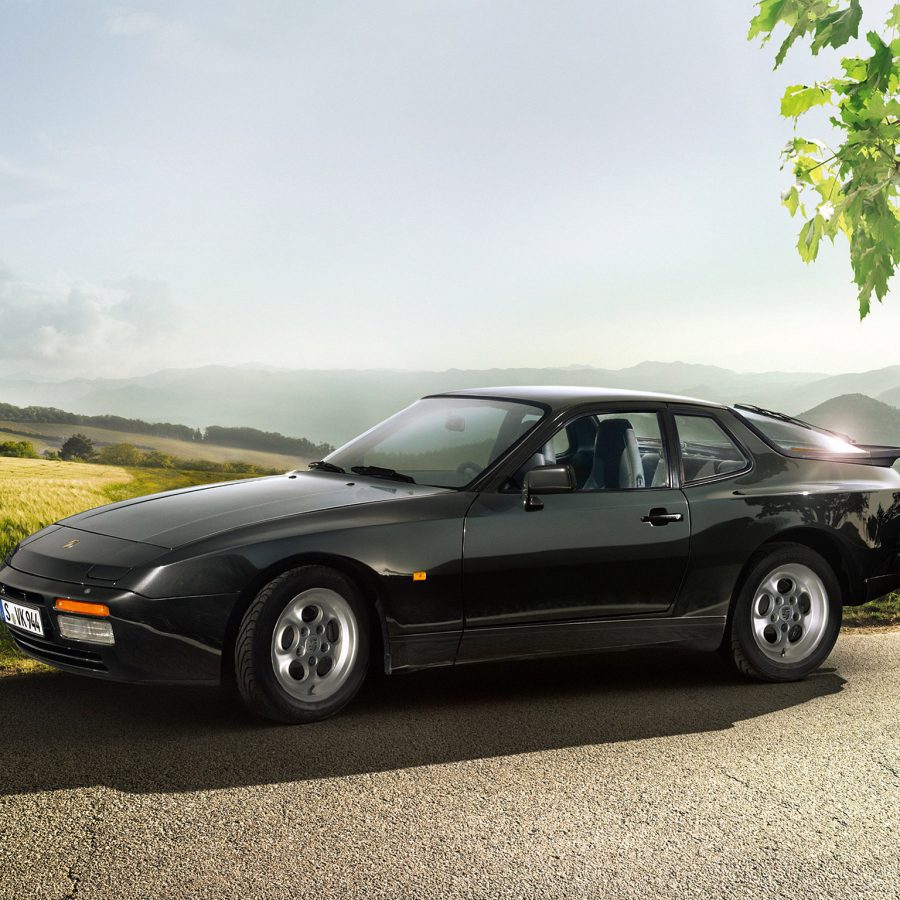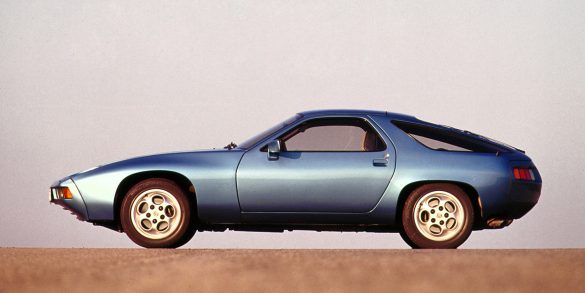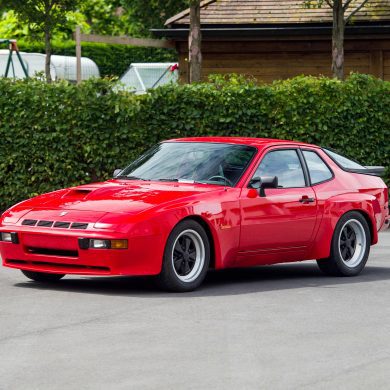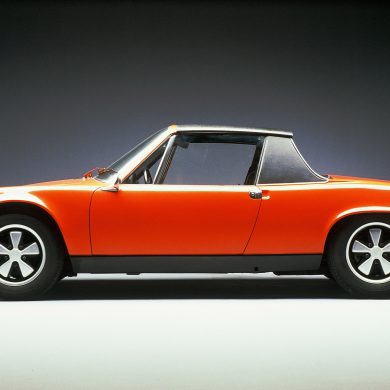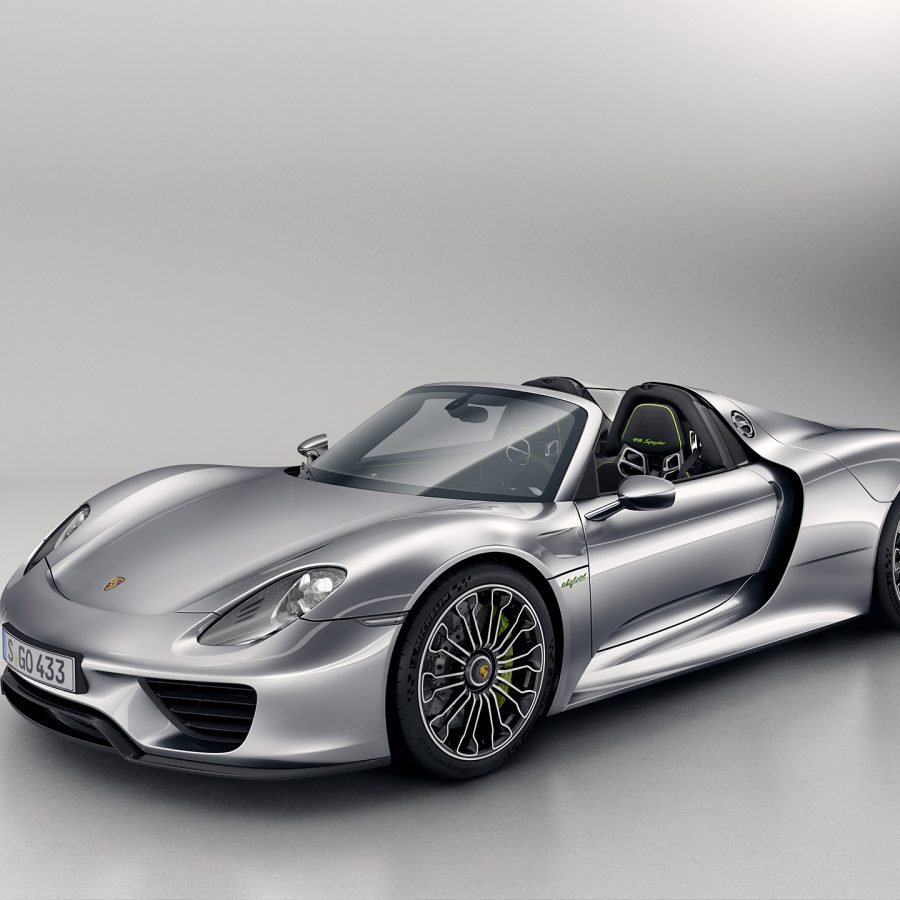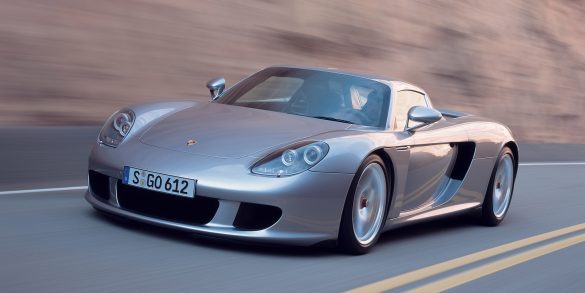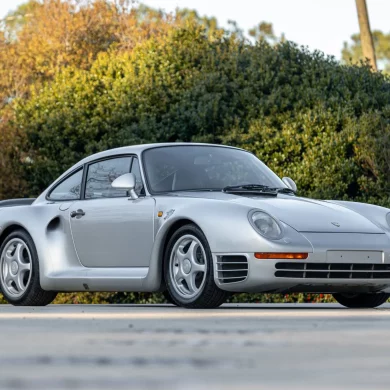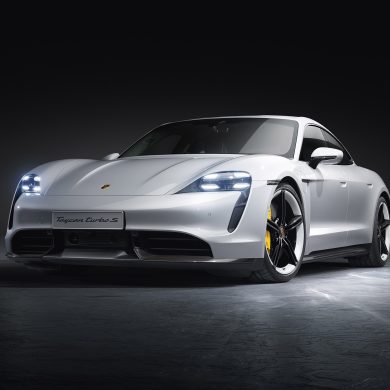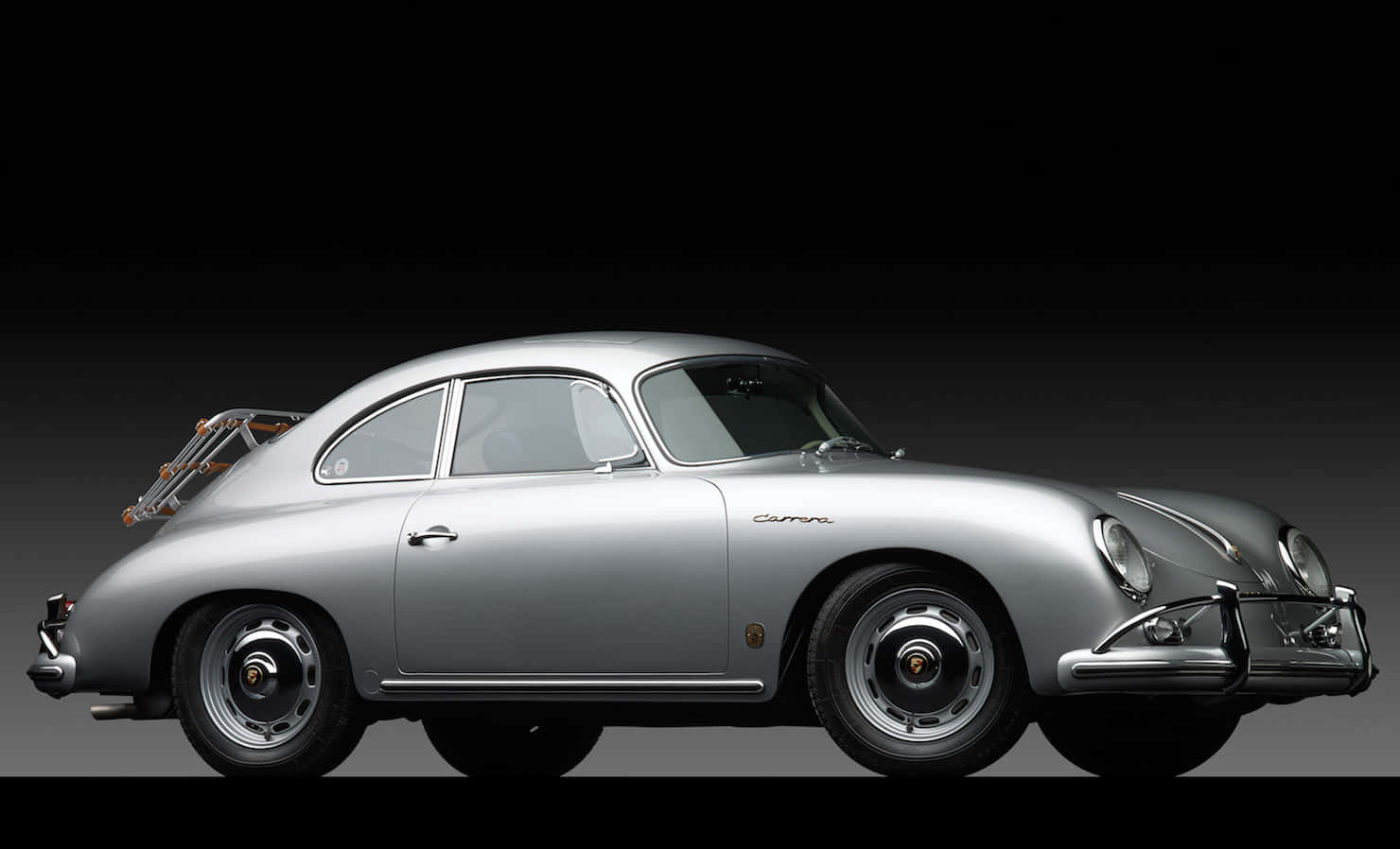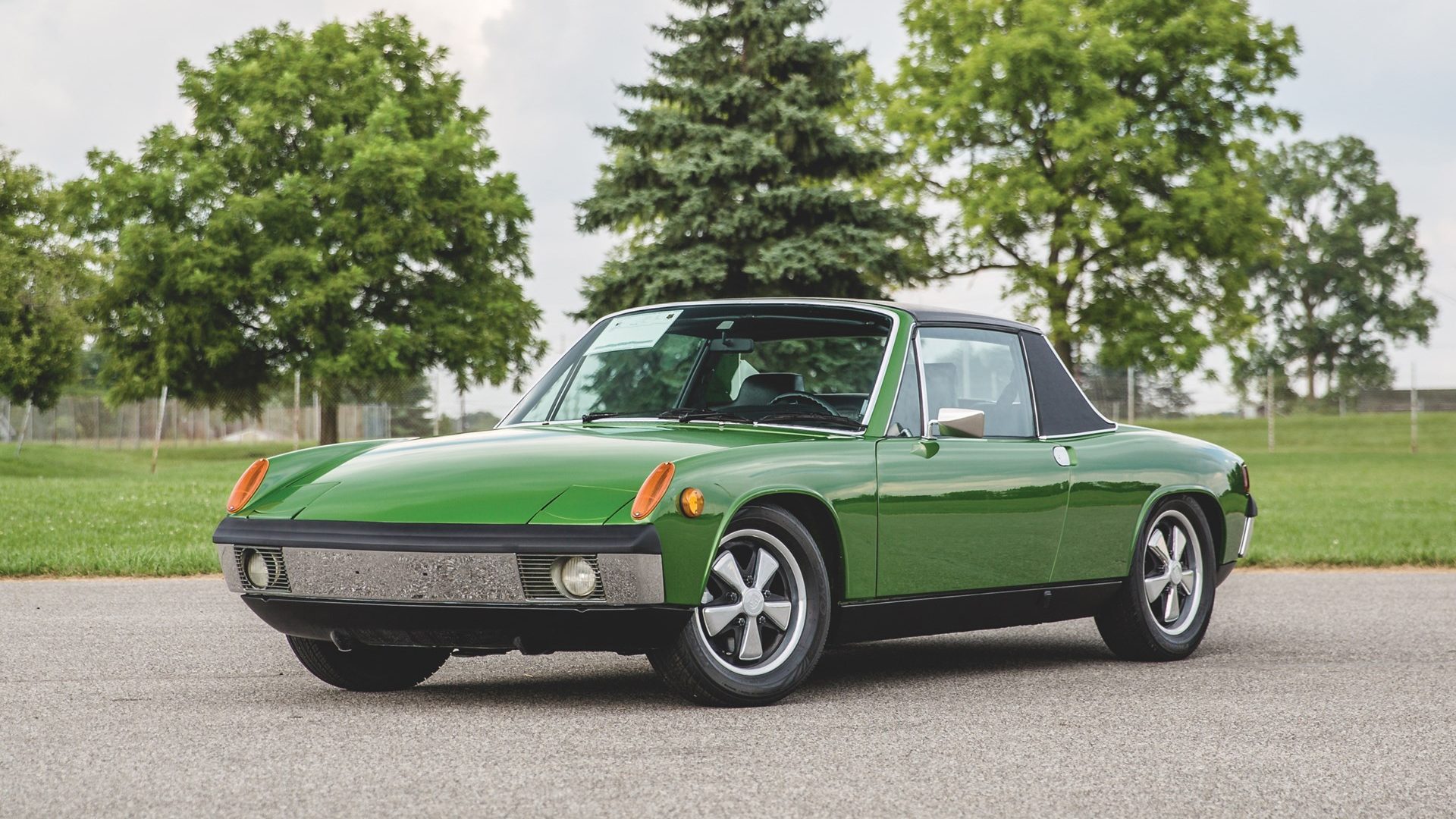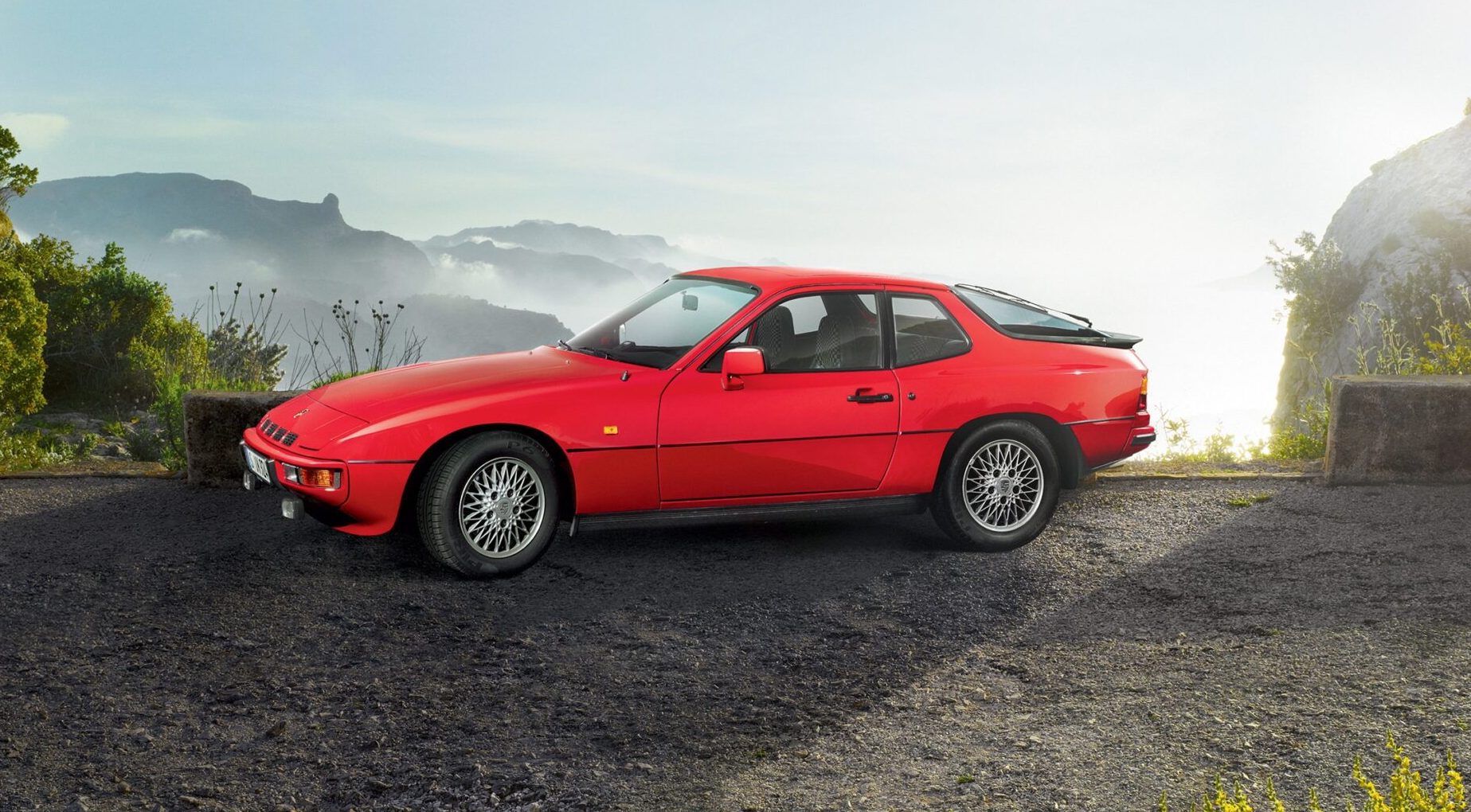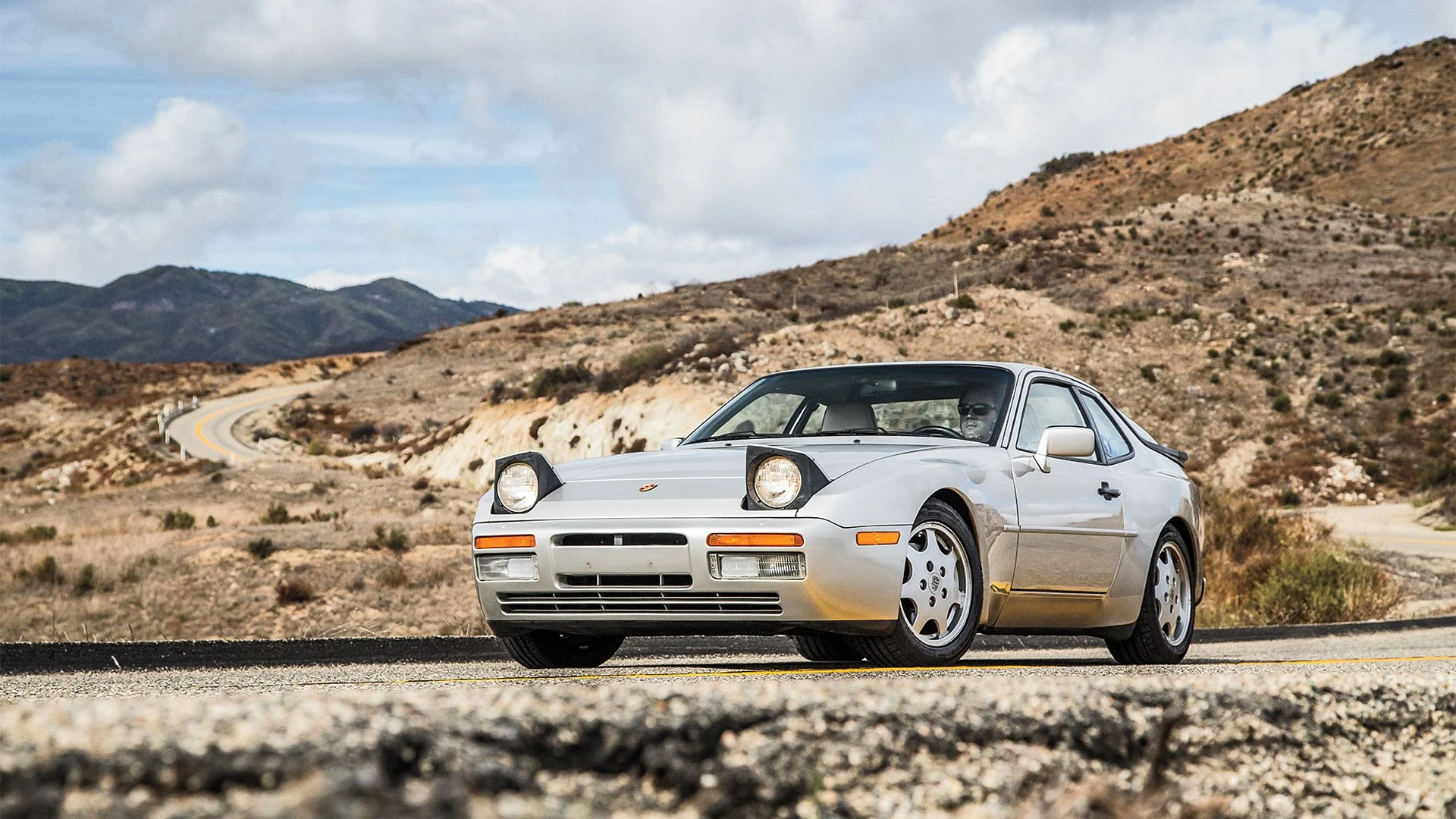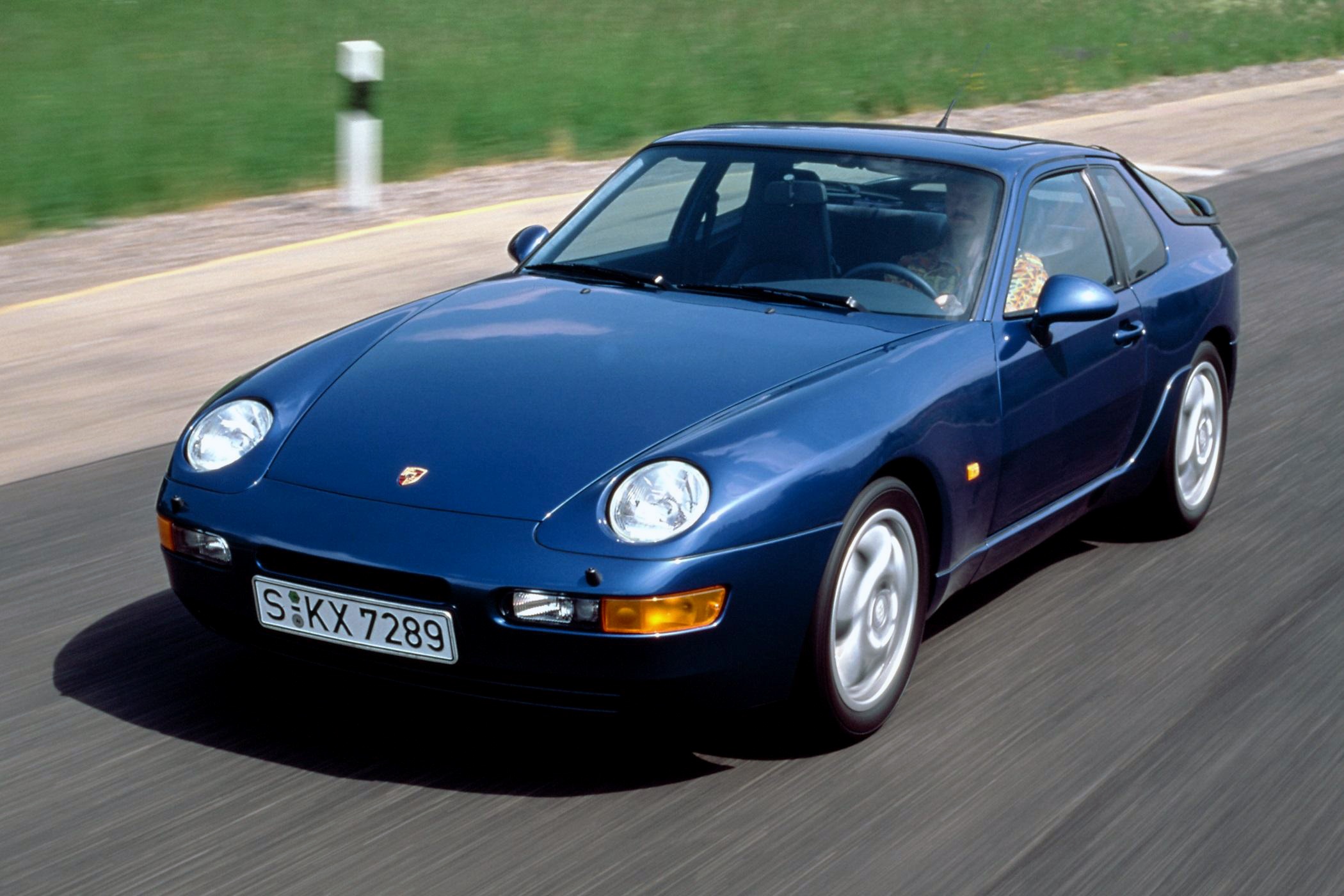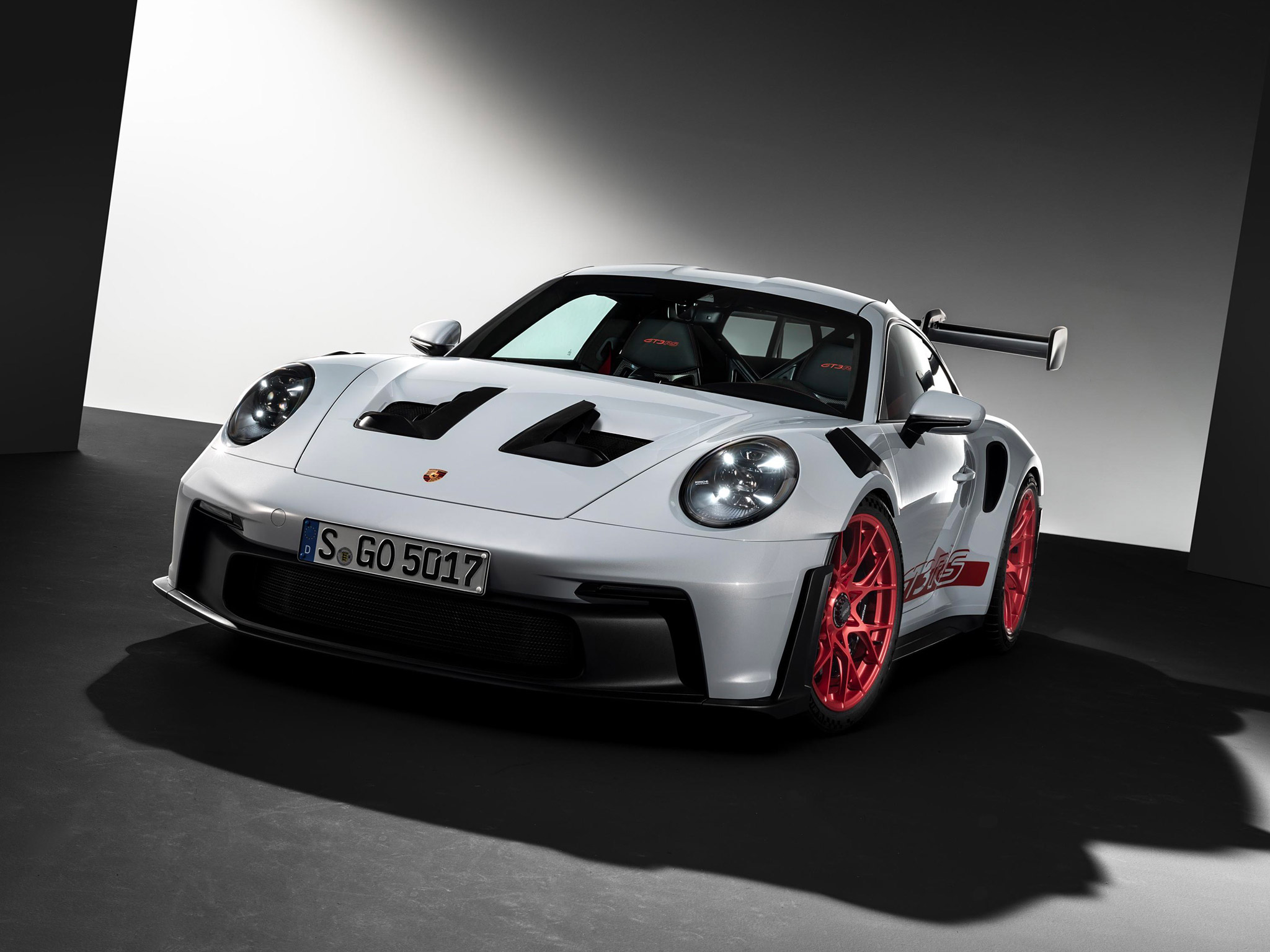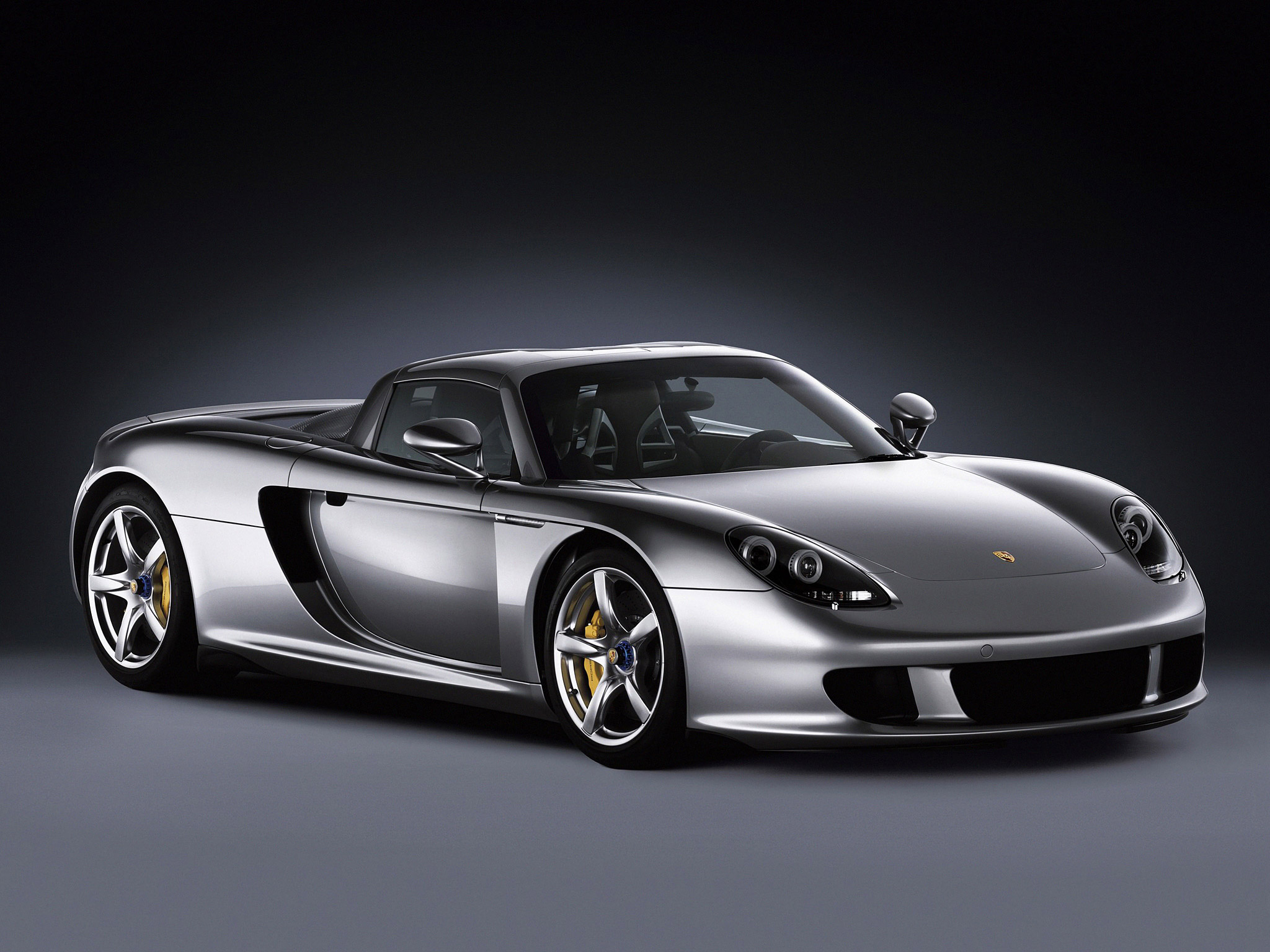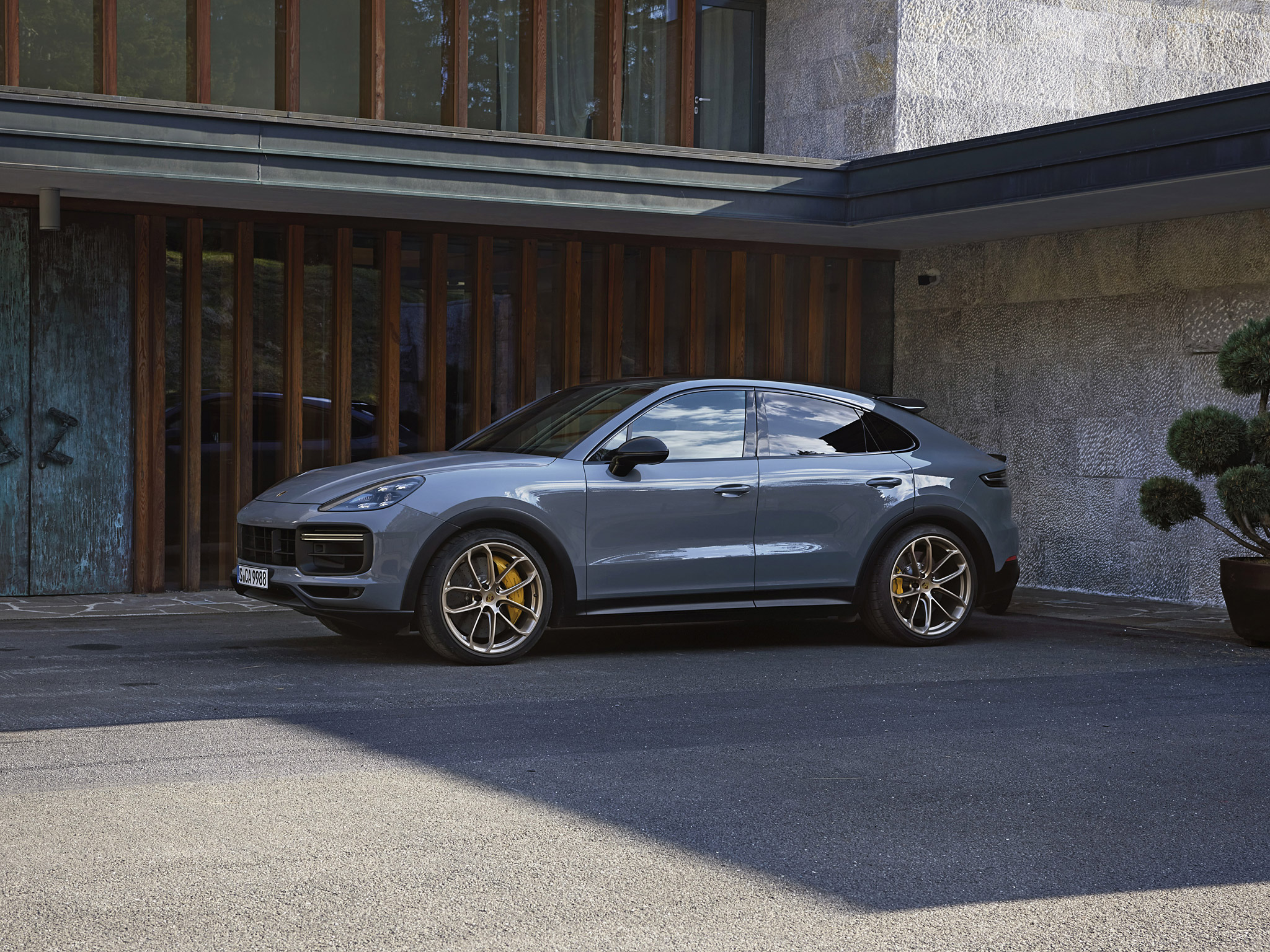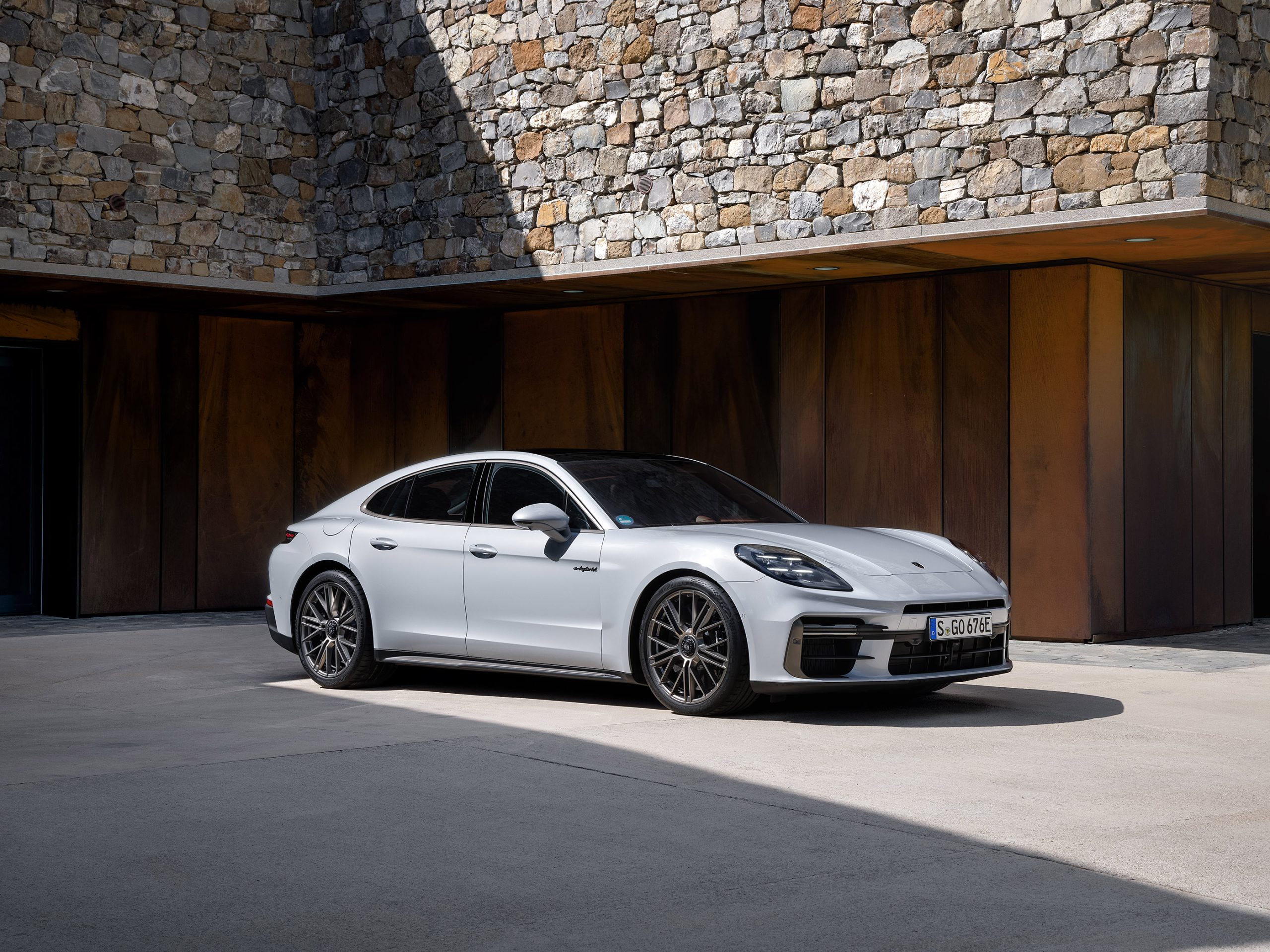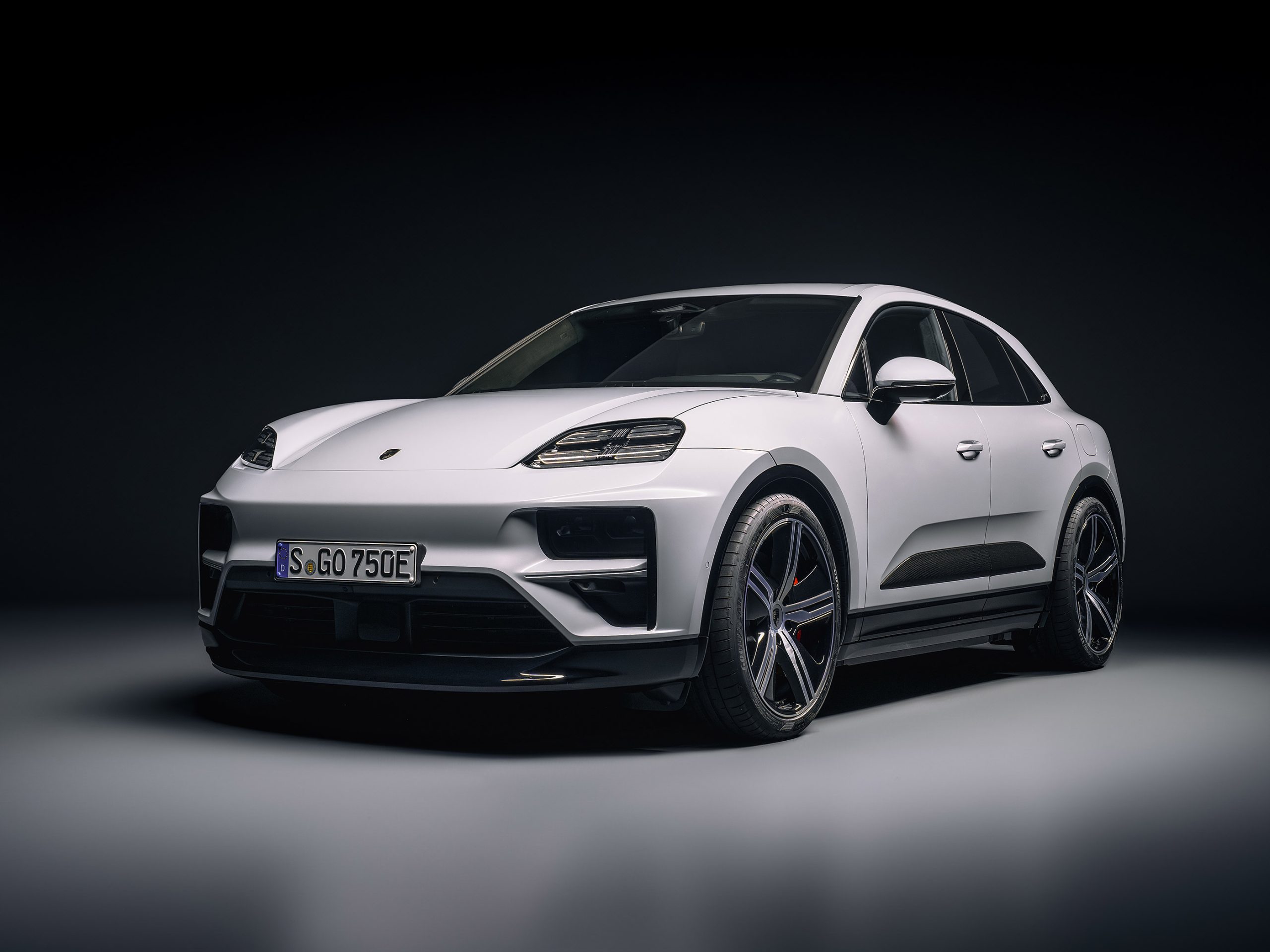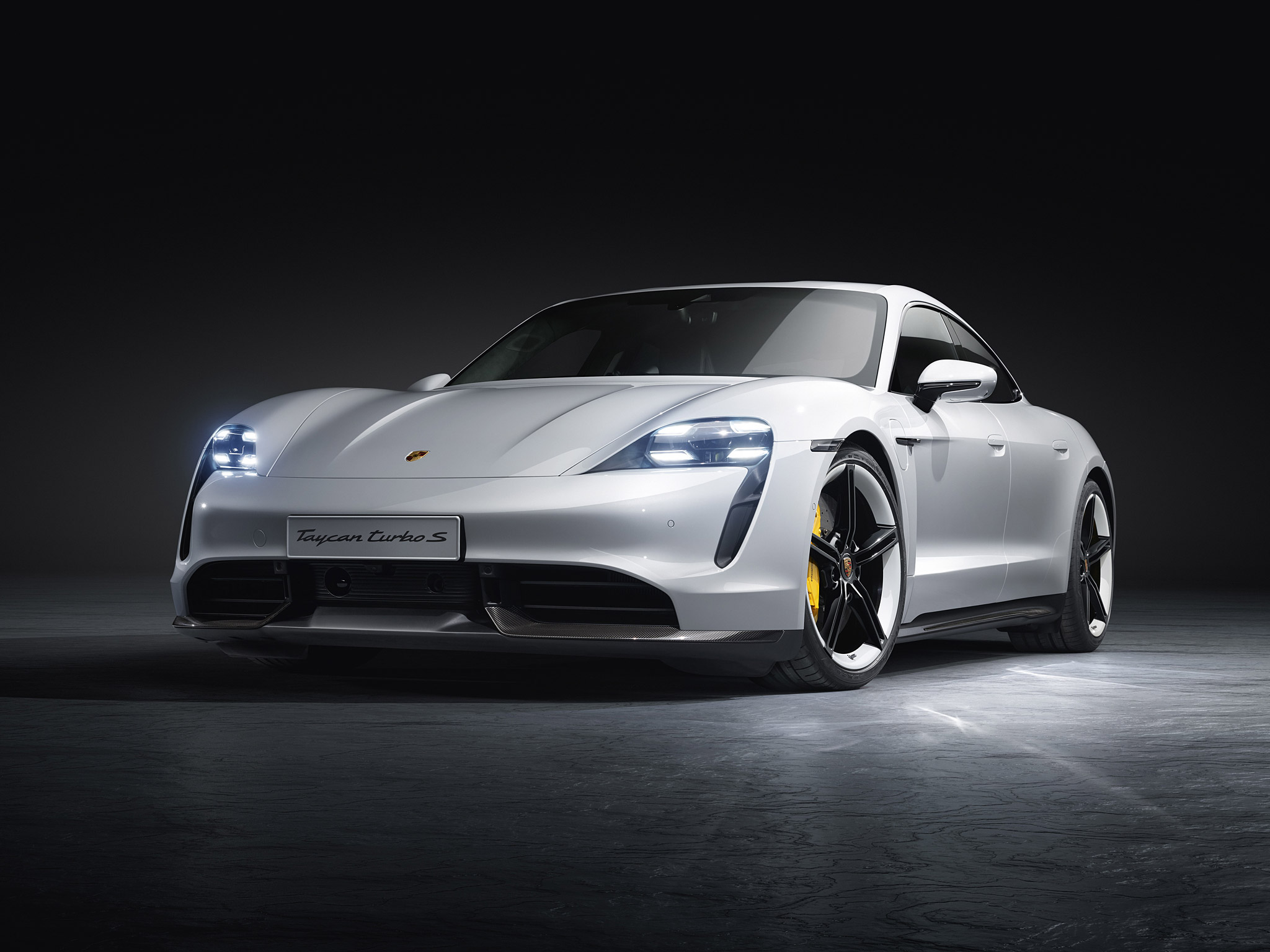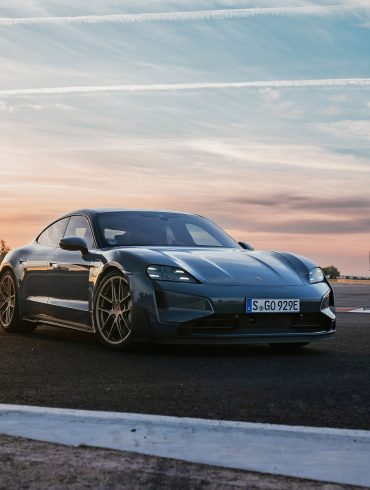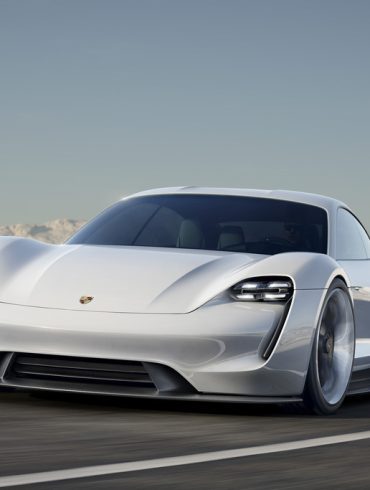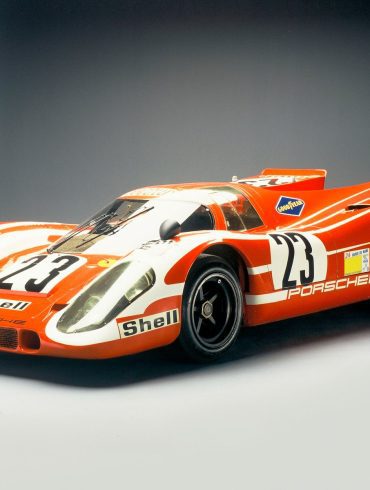Porsche Model List
Model Deep Dives / Production Model List / Race Car List / Concept Car List / Current Model List
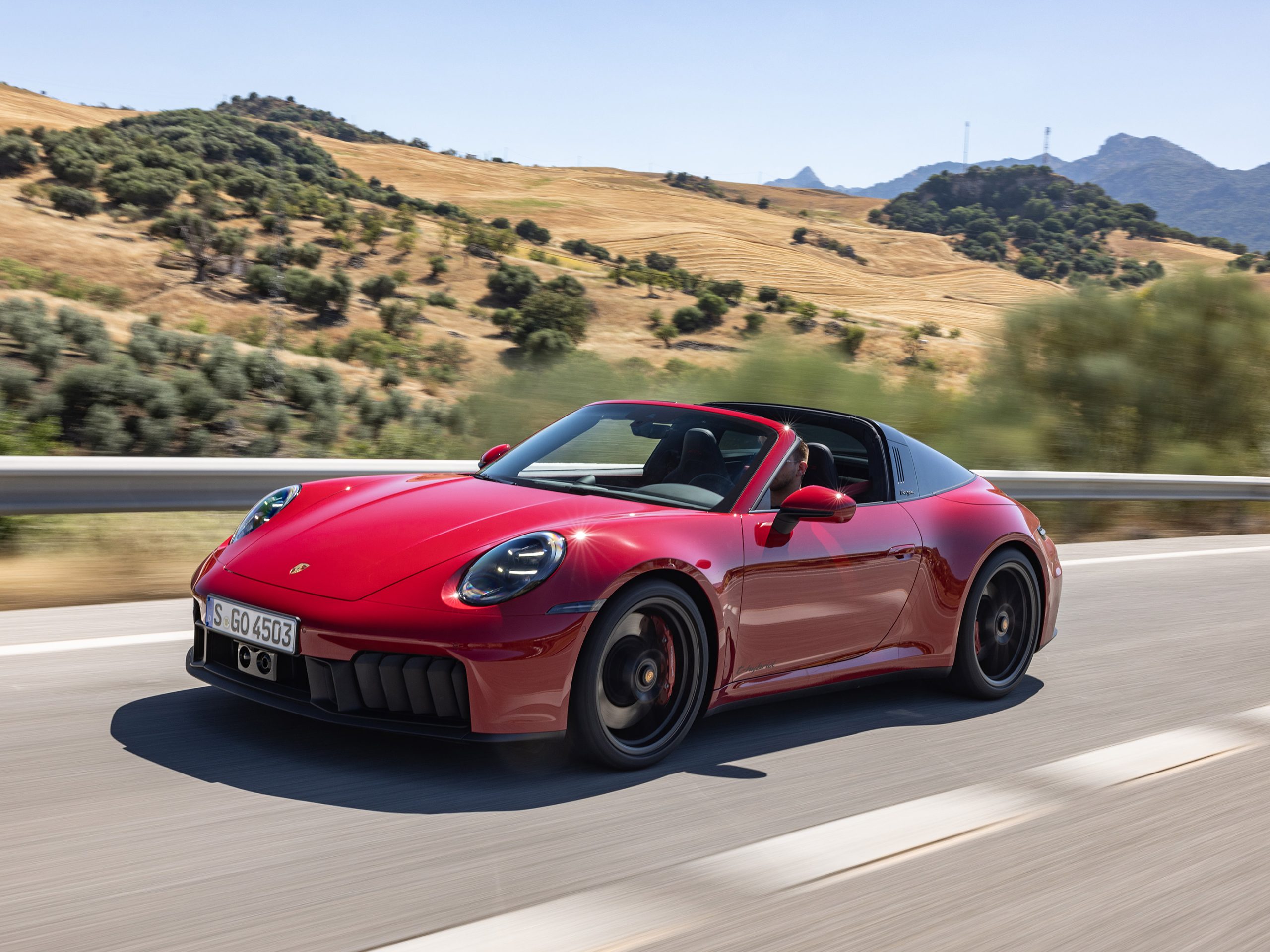
Porsche Model List. Every Porsche, Every Year.
In this section we focus on the cars that made Porsche a household name. First up is the Porsche 356 which was the first production model by the formal Porsche company. Lightweight and with awesome handling, this diminutive sports car was a hit. With an engine in the back and rear-wheel drive it was sporty and fun. Over the years four generations were built and the 356 had roadster, convertible, cabriolet, and split-roof variants.
No other model is more famous worldwide than the Porsche 911. Its rear engine, flat six boxer engine formula has been consistent since it was first built. With decades of continuous development it is the best sportscar in history. Air-cooled engines were core to 911 value proposition until the 996 in 1998 when the engines switched to being water cooled. The Porsche 911 has continued to drive innovation and stay on the cutting edge and hasn’t been afraid to embrace changes once thought sacred.
Porsche isn’t just about 911s either. Models like the 928, 944 on so on dotted its history. More recently Porsche has grown its model range a lot. First was the Porsche Boxster which was soon followed by the Cayman which is basically the same car with a roof. Add the SUVs, the first of which was the Cayenne and now the Macan as well as the Panamera four door offering and Porsche is no longer just a sportscar maker. As if all of this model range growth wasn't enough, Porsche now has a world-class electric car called the Taycan.
Porsche Production Cars
Other Porsche Pages
Current Porsche Models
Porsche Supercars
Porsche 356 Models
Porsche Boxster Models
Porsche Boxster / Cayman Models
Misc Porsche Models
Porsche 911 Models
Porsche 356
The Porsche 356, launched in 1948, wasn't just Porsche's first production car; it was the genesis of a legend. Born from the mind of Ferry Porsche, son of Ferdinand Porsche, it embodied the core values that would define the brand for decades to come. With its rear-engine, air-cooled design, the 356 prioritized lightweight agility and a connected driving experience. Its rounded shape, with distinctive features like a split windscreen and sloping roofline, became an icon of automotive design. More than just a sports car, the 356 was a versatile machine, capable of tackling everyday driving or spirited weekend adventures.
356 Generations
356 Pre-A (1948-1955)
356 A (1955-1959)
356 B (1959-1963)
356 C (1963-1966)
356 Variants
Porsche 356 A 1500 GS Carrera GT
Porsche 356 A 1600 GS Carrera GT
Porsche 356 B 1600 GS/GT Carrera Coupe
Porsche 356 B 2000 GS/GT Carrera
Porsche 356/1
Porsche 356/2 “Gmünd” Coupe
Porsche 356/2 “Gmünd” Cabriolet
Porsche 356 1100 “Pre-A”
Porsche 356 1300 “Pre-A”
Porsche 356 1500 “Pre-A”
Porsche 356 1500 Super “Pre-A”
Porsche 356 1300 Super “Pre-A”
Porsche 356 1500 “Pre-A” Speedster
Porsche 356 1500 “Pre-A” Super Speedster
Porsche 356 1500 “Pre-A” Carrera (4-cam)
Porsche 356 A 1300
Porsche 356 A 1300 S
Porsche 356 A 1600
Porsche 356 A 1600 S
Porsche 356 A 1500 Carrera GS
Porsche 356 A 1600 Carrera GS
Porsche 356 B 1600
Porsche 356 B 1600 S
Porsche 356 B 1600 Super 90
Porsche 356 B Carrera 2
Porsche 356 C 1600 C
Porsche 356 C Carrera 2
Porsche 356 C SC
356 Specials
Porsche 356 SL Roadster
Porsche 356 SL Gmünd Coupe
Porsche-Glöckler 356 Roadster
Porsche 356 A 1500 GS Carrera GT
Porsche 356 A 1600 GS Carrera GT
Porsche 356A/1600 Super GT Speedster
Porsche 356B/1600GS Carrera GTL Abarth
Porsche 356B 1600 Super 90 GT Coupe
Porsche 356 B 1600 GS/GT Carrera Coupe
Porsche 356 B 2000 GS/GT Carrera
Porsche 356 B Carrera ‘Dreikantschaber’
Porsche 356 ‘America Roadster’
Porsche 1600 Beutler Coupe
Porsche 356 A 1600 Zagato Speedster
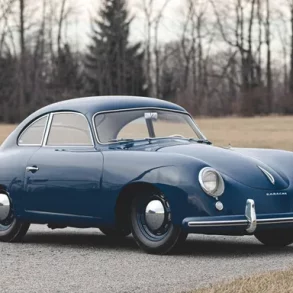
Porsche 356 Pre-A
1948 - 1955
The early 356 models were simple, with split or bent windshields and small 1.1 to 1.5-liter engines. In 1955, the Pre-A models culminated with the introduction of the 356 Speedster, a stripped-down, lightweight variant designed for the American market.
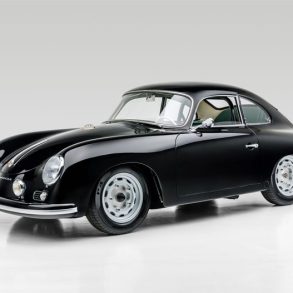
Porsche 356 A
1955 - 1959
The 356A, often referred to as the T1 and T2, introduced several improvements, including a curved windshield, updated suspension, and a wider range of engine options (1.3L to 1.6L). The Carrera engine was also introduced, offering higher performance.
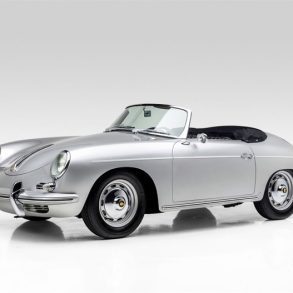
Porsche 356 B
1959 - 1963
The 356B, known as the T5 and T6, brought a more aggressive front design with higher bumpers and a revised hood. Engine options continued to improve, and the Carrera 2 featured a 2.0-liter engine. The 356B also introduced the Roadster model.
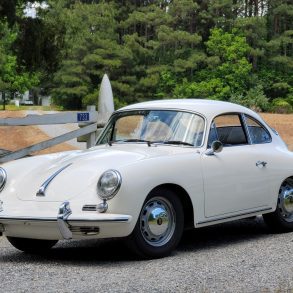
Porsche 356 C
1963 - 1966
The final iteration of the 356 featured the most advanced engineering of the series, including disc brakes and the SC engine producing 95 horsepower. It was the pinnacle of the model's evolution, with refined performance and styling.
Porsche 914
The Porsche 914 was a joint development between Porsche and Volkswagen and was the new Porsche entry-level model as of model year 1970.The two-seater, also known as the "VW Porsche", was a mid-engine Sports Car. Striking design features included the very long wheelbase for the vehicle length, short overhangs, the removable roof centre panel made from glass fiber-reinforced plastic as well as the wide safety bar. The 914 also featured pop-up headlights. At the time of its launch, the 914 was available with two engines. 914: 1.7-liter flat-four engine with 80 hp from Volkswagen and the 914/6: 2.0-liter flat-six engine with 110 hp from the Porsche 911 T. These were followed by a 2.0-liter four-cylinder engine with 100 hp based on the 1.7-liter engine in model year 1973 and a 1.8-liter four-cylinder engine with 85 hp in model year 1974.
914 Model Variants
Porsche 914/6 (2.0 L)
Porsche 914/4 (1.7 L)
Porsche 914/4 (2.0 L)
Porsche 914/4 (1.8 L)
914 Special Variants
Porsche Tapiro Concept (1970)
Porsche 916 Concept (1971)
Porsche 914 LE
Porsche 914/8
Porsche 914-6 GT
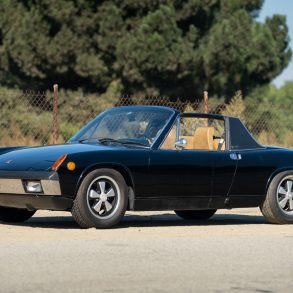
Porsche 914/6 (2.0 L)
1970 - 1972
The standard 914 was powered by Volkswagen’s horizontal four-cylinder engine, producing a power output of 80 hp. Even with the lightweight Porsche body, acceleration suffered. The solution to this was to offer a second version: the 914/6, powered by a six-cylinder engine, total power output exceeded 100 hp. Unfortunately, this made the 914/6 was nearly as expensive as a standard 911.
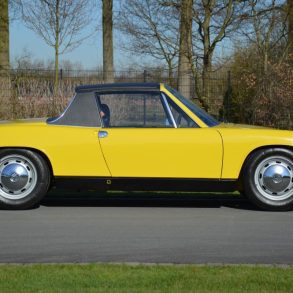
Porsche 914/4 (1.7 L)
1970 - 1973
The Porsche 914 was first shown at the 1969 Frankfurt Auto Show was, as intended, a true conglomeration. The front suspension was largely derived from the 911 with some VW components, and the interior was a blend of both companies' parts bins. The initial engine offering was Volkswagen's 80-hp fuel-injected 1.7 liter flat four, while the 914/6 had a twin-carburetor 2.0-liter Porsche flat six tuned for 125 hp.
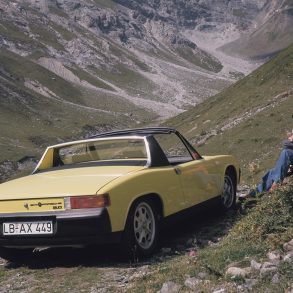
Porsche 914/4 (2.0 L)
1973 - 1976
This came in 1973, when the fuel-injected variant of Volkswagen’s air-cooled Type 4 engine was dropped in behind the two seats, staying there through 1976, when series production ended. (The engine continued on in the 912E, which succeeded the 914 as Porsche’s entry-level car.) The short-stroke, overhead-valve powerplant displaced 2.0 liters (1971 cc) and made its 100 hp at 5000 rpm.
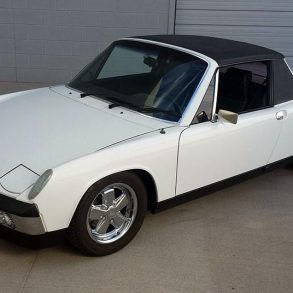
Porsche 914/4 (1.8 L)
1974 - 1976
For 1974 a 1.8-liter engine replaced the 1.7 and had a new type of electronic fuel injection called AFC (air flow control), or ‘L’ Jetronic. This same basic injection was used on 911s in the late-’80s. Unfortunately, due to emissions regulations, the 1.8 made just 76 hp, less than the smaller engine it replaced. The standard steel wheels were changed to 5.5-inch wide VW units. Rubber bumper guards now adorned the rear.
Porsche 924
The Porsche 924 was a significant departure from the traditional Porsche formula. Introduced in 1976, it was the first Porsche to feature a water-cooled, front-mounted engine and rear-wheel drive layout. Developed in conjunction with Volkswagen, the 924 utilized a Volkswagen-sourced engine, reflecting a pragmatic approach to entry-level sports car development. While some purists initially criticized this departure from Porsche's air-cooled, rear-engine heritage, the 924 offered a more affordable and practical entry point into the Porsche brand. Despite its unconventional origins, the 924 proved to be a successful model. It offered a comfortable and refined driving experience with a surprisingly engaging handling characteristic. The 924 also spawned several performance variants, including the turbocharged 924 Turbo and the more powerful 924S, which further enhanced the model's appeal.
924 Model Variants
Porsche 924
Porsche 924 Turbo
Porsche 924 Carrera GT
Porsche 924S
924 Special Variants
Porsche 924 Rallye Turbo
Porsche 924 SCCA (924D)
Porsche 924 Carrera GTP
Porsche 924 Carrera GTR
Porsche 924 Carrera GTS
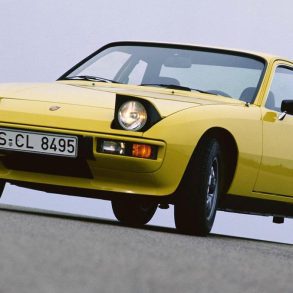
Porsche 924
1976 - 1986
The base model Porsche 924 was produced for model years 1976 to 1986. During its production run, VW decided to stop manufacturing the engine blocks used in this version (the 2.0 L 924), forcing Porsche to continue production for model year 1987 with a more powerful engine, calling it the 924S. The base model 924 had a production run of 121,000 vehicles approximately.
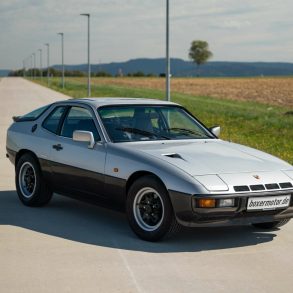
Porsche 924 Turbo
1979 - 1984
Porsche upgraded the performance of its 924 with the introduction of a turbocharged model in 1979. While the lower end of the engine remained unchanged, many improvements were made to the upper end of the engine as well as the drivetrain. On the outside, the car gained alloy wheels, a distinctive NACA duct in its hood, and a rear spoiler. Horsepower increased to 170 bhp.
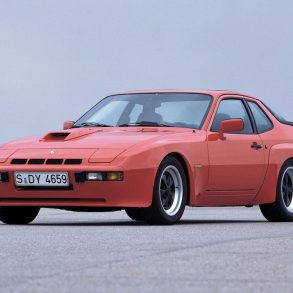
Porsche 924 Carrera GT
1980
In 1980, Porsche released the 924 Carrera GT, making clear their intention to enter the 924 in competition. By adding an intercooler and increasing compression to 8.5:1, as well as various other little changes, Porsche was able to develop the 924 Turbo into the race car they had wanted. 406 of the Carrera GT were built to qualify it for Group 4 racing requirements.
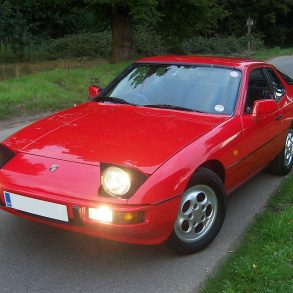
Porsche 924S
1987 - 1988
The decision was made to equip the narrower bodied 924 with a slightly detuned version of the 944's 163 bhp 2.5 litre straight four, upgrading the suspension and adding 5 lug wheels and 944 style brakes, but retaining the 924's early interior. The result was 1986's 150 bhp 924S. Porsche decided to re-introduce it to the American market with a price tag under $20,000.
Porsche 944
The Porsche 944, produced from 1982 to 1991, built upon the foundation of the 924 but with significant improvements. It featured a refined 2.5-liter inline-four engine developed entirely in-house by Porsche, marking a departure from the Volkswagen-sourced engine of its predecessor. This new engine, combined with improved aerodynamics and suspension, resulted in a more powerful and engaging driving experience. The 944 quickly gained a reputation for its balanced handling, comfortable ride, and practicality. It offered a compelling blend of performance and everyday usability, making it a popular choice for both enthusiasts and those seeking a more refined daily driver. The 944 also spawned several performance variants, including the turbocharged 944 Turbo and the high-performance 944 S2, further solidifying its position as a successful and enduring model in Porsche's history. There were six core (mass produced) production Porsche 944 models over the years. Over the years, performance and looks changed as Porsche improved the core 944 platform. Below we take a look at the production 944 models in detail.
944 Model Variants
Porsche 944 Coupe
Porsche 944 Turbo Coupe
Porsche 944 S Coupe
Porsche 944 S2 Coupe
Porsche 944 S2 Cabriolet
(1991)
944 Special Variants
Porsche 944 GTP
Porsche 944 Turbo Cup
Porsche 944 Callaway
Porsche 944 Swiss Special
Porsche 944 French Special
Porsche 944 Turbo S
Porsche 944 Celebration Edition
Porsche 944 S2 SE
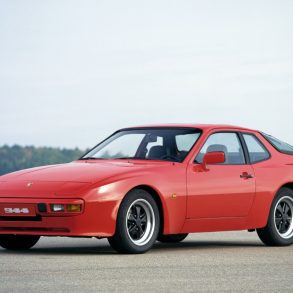
Porsche 944 Coupe
1982 - 1989
The base Porsche 944 coupe was built between 1982 and 1989, essentially the same platform as the Porsche 924 (there was some overlap as the 924 was produced till 1988). The 944 was intended to last into the 1990s, but major revisions planned for a 944 S3 model were eventually rolled into the Porsche 968 instead, which replaced the 944. This was a fun time at Porsche and we're fans of the base 944.
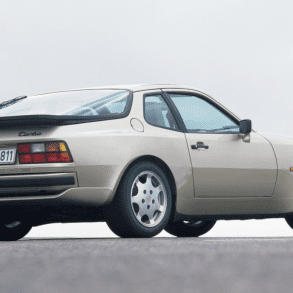
Porsche 944 Turbo Coupe
1985 - 1991
It didn’t take Porsche’s engineers long to significantly improve on the base 944’s performance by doing the obvious and adding a turbocharger to the engine. The 944 Turbo entered production in 1985 for the 1986 production year and it made a significant difference to the stock 944’s performance. Power of the new turbocharged engine was 220hp and torque was 243lb/ft, a big increase over base 944.
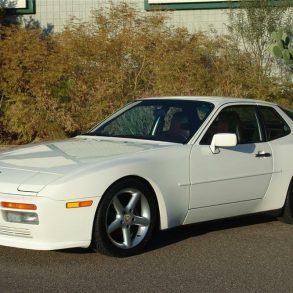
Porsche 944 S Coupe
1987 - 1988
In 1987 Porsche debuted the 944 S, the “S” standing for “Super”. This “Super” Porsche 944 was fitted with a more high performance version of the naturally aspirated four cylinder engine. This engine had dual overhead camshafts to operate the four valves per cylinder and revised engine management with dual knock sensors to best handle the 10.9:1 compression ratio. Power was 187hp.
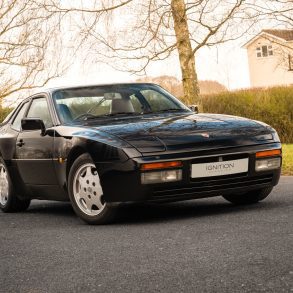
Porsche 944 S2 Coupe
1989 - 1991
Next up is the contemporary 944 S2. Porsche, as a company, were heading into tough times and were relying on the 944 S2 and the new 911, the 964, to make enough money just to stay afloat. Porsche upped the performance of the 944 S2 thanks to an upgraded engine, a 3.0 liter version of the DOHC double valve four cylinder that was good for solid 208 hp. The 16-valve engine was bored out from 2.5 litres to 3.0 litres.
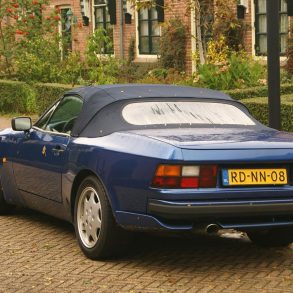
Porsche 944 S2 Cabriolet
1989 - 1991
The S2 was also available as a cabriolet, a first for the 944 line. The Cabriolet, engineered by American Sunroof Company, was rumored to be two years late in arriving on the market due to unprecedented chassis flex problems. The finished article, despite being 70 KG heavier than the coupe, displayed no obvious signs of such problems, and its clean lines found a place in many hearts.
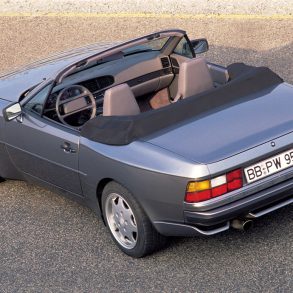
Porsche 944 Turbo Cabriolet
1991
The last iteration of the 944 Turbo was the 944 Turbo Cabriolet which was the 944 Turbo Cabriolet. This was a 944 Turbo S with a special cabriolet body made by the American Sunroof Company (ASC) of Weinsberg, Germany, who also made the bodies for the 944 S2 Cabriolet. 625 of the 944 Turbo Cabriolet were made with 100 being built with right hand drive and the remaining 525 being left hand drive.
Porsche 968
The 968 was almost called the 944 "S3", an upgrade to the "968 S2" that Porsche had introduced in 1989. With over 80% of the 944's components new or modified, Porsche decided instead to introduce the car as a new model, hence the 968 was born. Production was moved from the Audi plant in Neckarsulm (where the Porsche 924 and Porsche 944 had been made) to Porsche's own factory in Zuffenhausen. The 968 was produced from 1992 to 1995 and was marketed as the replacement for the Porsche 944. When production ceased in the 1995 model year, it represented the end of a line started almost 20 years earlier with the introduction of the Porsche 924. By late 1991, the 968 was ready. It retained all the good bits of its predecessor, while significantly improving appearance, handling, and performance. The 968 was introduced in September 1991 at the Frankfurt Motor Show as a 1992 model. The big news new model was the engine. The 968 got an updated version of the 944’s straight-4 engine, now displacing 3.0 L and producing 236 bhp.
968 Model Variants
Porsche 968 Coupe
Porsche 968 Cabriolet
Porsche 968 Sport
968 Special Variants
Porsche 968 Turbo RS
Porsche 968 CS Coupe
Porsche 968 Turbo S
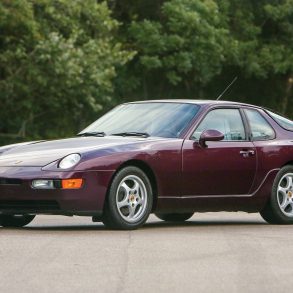
Porsche 968 Coupe
1992 - 1995
The Porsche 968 was a new-and-improved version of the Porsche 944. The 968 also came with an upgraded engine, an improvement on the 2.7L M44/12 16-valve inline-four cylinder engine found in the last base Porsche 944 model from 1989. The new engine now has a 3.0L capacity and makes 237 horsepower, a 64HP upgrade from the 2.7L model. In addition to the engine, the 968 also came with a new transmission. The 944 has a 3-speed automatic or a 5-speed manual transmission.
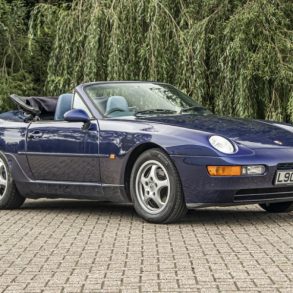
Porsche 968 Cabriolet
1992 - 1995
Launched in August 1991 for the 1992 model year, the 968 was available in two body styles: a Coupe and a Cabriolet. Cabriolets came with reinforced bodyshells to compensate for the lack of a roof. Porsche quoted a weight of 1370kg for the Coupe and 1440kg for the Cabriolet. Cabriolet top speeds were slightly slower owing to their messier aerodynamics, but it was dynamically pretty impressive despite the non-coupe body.
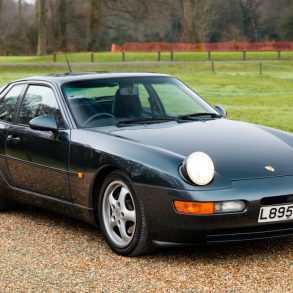
Porsche 968 Sport
1994 - 1995
A UK-only version called "968 Sport", was offered in 1994 and 1995, and was essentially a Club Sport model (and was produced on the same production line with similar chassis numbers) with power windows, electric release boot, central locking, cloth comfort seats (different from both the standard and the Club Sport). The Sport variant also got back the two rear seats, again in the cloth material specific to the Sport.
Porsche 911 Generations & Variants
The 911 was always modern but never fashionable. As the successor to the Porsche 356, the 911 won the hearts of sports car enthusiasts from the outset. Perhaps the most popular and most-loved 911 is the 993 that was launched in 1993. Peopled loved the design and the 993 quickly gained a reputation for exceptional dependability and reliability. The defining 993 model was the epic Turbo with its twin turbo engine and all-wheel drive drivetrain. The 993 was also the end of the era as it was the last air-cooled 911. As we enjoy the latest 992 era Porsche 911, it is worth taking a look at the full range over the years.
911 Generations
Notable 911 Variants
Porsche 911 Early Years
Porsche 912
Porsche 901
Porsche 911 2.0L / O, A, B
Porsche 911 2.2L / C, D
Porsche 911 2.4L / E, F
Porsche 911 Carrera RS
Porsche 911 RSR
Porsche 911 2.7L / G, H, I, J
Porsche 911 30 Turbo
Porsche 911 SC
Porsche 911 3.2 Carrera
Porsche RS Models
Porsche 911 Speedster
Porsche 911 Targa
Porsche 911 Turbo
Notable 911 Variants
Porsche 911 GT3
Porsche 911 GT3 RS
Porsche 911 GT2
Porsche 911 GT2 RS
Porsche 911 GT1
Porsche 911 R
Porsche 911 S/T
Porsche 911 Sport Classic
Porsche 911 T
Porsche 911 GT Cup
Porsche 911 GT Cars
Porsche 911 Carrera 4
Porsche 911 Carrera S
Porsche 911 Carrera
Porsche Carrera RS
Porsche 911 Carrera GTS
Porsche 911 Generations
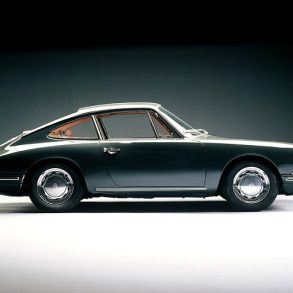
Porsche 911 (F-Body) Generation
1986 - 1993
Porsche wanted to offer a larger, four-seater version of its 356. The all-new car featuring a new chassis with MacPherson struts, semi-trailing arms and torsion bar springs, and a brand-new air-cooled, OHC flat-six “boxer”.
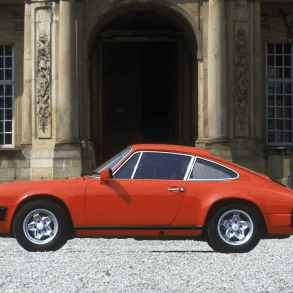
Porsche 911 (G-Body) Generation
1974 - 1989
A decade into the 911's life and Porsche decided an update was needed. The G Series 911 was the result. Launched in 1973 with production until 1989, just shy of 200,000 units were sold and still the longest running 911.
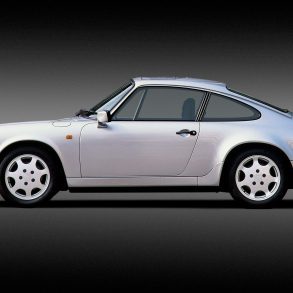
Porsche 911 (964) Generation
1989 - 1994
In 1989 Porsche came out with the 964. The new 911 was a contemporary take on the classic two-door sports car and came at a time when many were predicting the end of the 911. 85% new components and new architecture.
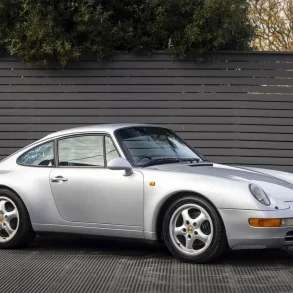
Porsche 911 (993) Generation
1994 - 1998
Sold between January 1994 and early 1998 (with U.S. based models going on sale from 1995-1998.). Considered by many Porsche enthusiasts as the “ultimate 911”, it had a blend of power and simple elegance. Our favorite 911 generation by far.
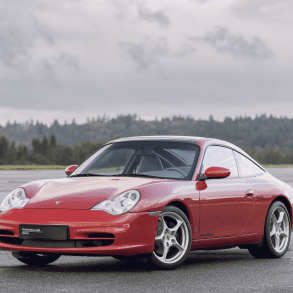
Porsche 911 (996) Generation
1998 - 2004
With all- new body work, a reimagined interior, and the first water-cooled engine ever used in a 911 it broke with tradition in a big way. The new 911 featured water-cooled flat-6. Standard models got an mid-cycle update later.
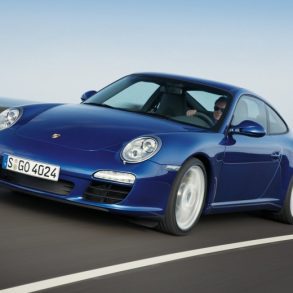
Porsche 911 (997) Generation
2005 - 2013
While the Porsche 911 Type 997 featured a refined, race-inspired appearance, the car was hailed for being a true high-performance vehicle. Type 997 received an update in late-fall 2008 (called the 997.2).
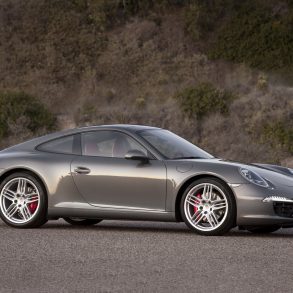
Porsche 911 (991) Generation
2012 - 2019
Completely redesigned seventh-generation. Lower fuel consumption, more power and lower weight. 2015 991.2 update was monumental, with introduction of turbocharged flat six engine across most of the range.
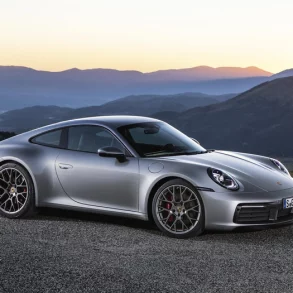
Porsche 911 (992) Generation
2019 - Present
The latest evolution of the world’s most iconic sports car. The car is bigger, faster and more technology-laden than ever before. Updated for 2025, including the introduction of hybrid power for some models.
Porsche 911 Variants

Porsche 911 Early Yrs
As previously stated, the Porsche 911 started its life as Porsche Type 901. It traces its roots directly back to sketches drawn by Ferry’s son Ferdinand Porsche. The early years of the 911 cemented its place as the one to watch.
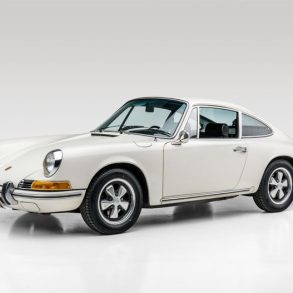
Porsche 912
Porsche recognized that the 911 would also cost considerably more than the outgoing 356 had, and so the 912 was introduced to bridge the gap between the outgoing 356 and the 911. It was made between 1965 and 1969 as the entry level.
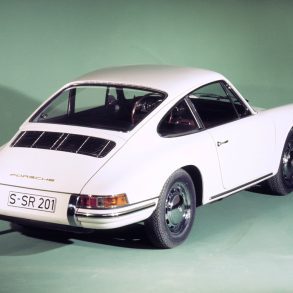
Porsche 901
In 1963 Porsche introduced their seminal 901 at the 911 at the Frankfurt Motor Show which would be renamed 911 for the 1964 model year. The new car was sold alongside the 356C as an alternative with more power. This is the one that started it all.
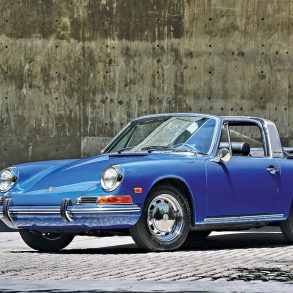
Porsche 911 2.0L / O, A, B
The first 911 cars set the formula we all love. Rear mounted air-cooled flat 6 boxer engine. The original 911s had a 2.0 liter unit that produced 129hp. In 1967, Porsche introduced the 160 hp 911S model with our favorite Fuchs wheels.
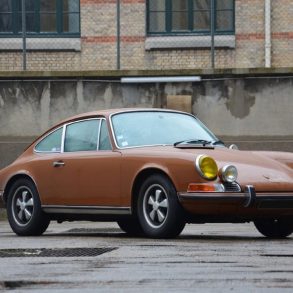
Porsche 911 2.2L / C, D
The 911 C series was introduced in August 1969 and featured an enlarged 2.2-litre engine. Porsche improved the engines by increasing displacement to 2.2 liters and power increasing across the range. Porsche 911T saw power reach 123 hp.
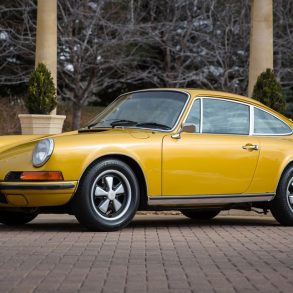
Porsche 911 2.4L / E, F
The three model variants in the 911 lineup stayed the same in 1972/73 with the entry level T, the midrange E and the top of the line S making up the portfolio. Once again Porsche upped engine size and power across the board.
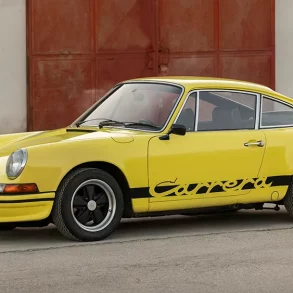
Porsche 911 Carrera RS
Porsche wanted to go racing and needed to meet minimum production of 500 units in order to compete, which is why us lucky Porsche fans now get to dream about owning an RS model. 1580 Carrera 2.7 RS units were made.
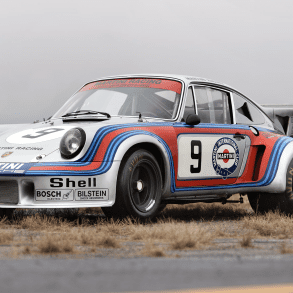
Porsche 911 RSR
For the privateer in the mid-1970s who wanted to go sports car racing, and in particular compete successfully at the famed Le Mans, there was really only one viable option, the Porsche RSR. Recently new race cars have been given RSR name.
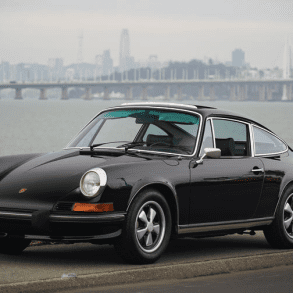
Porsche 911 2.7L / G, H, I, J
1974 saw the introduction of US mandated impact bumpers and another increase in engine size (now up to 2.7L) across the range. Fuel injection was available in the 911 (175 bhp) and 911S (175 bhp) models.
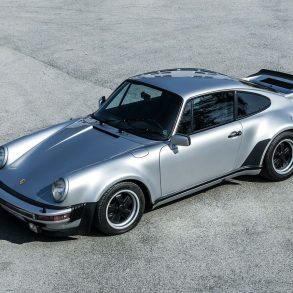
Porsche 911 30 Turbo
In 1974 Porsche introduced the first production turbocharged 911. Called simply Porsche 911 Turbo in Europe, it was marketed as Porsche 930 in America. Starting out with a 3.0 L engine with 260 hp, it rose to 3.3 L and 300 hp for 1978.
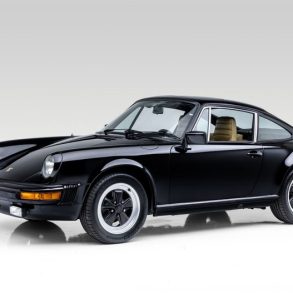
Porsche 911 SC
The 911 SC replaced the 911 S and was one of Porsche's first models that was meant for international markets. It was a cheaper alternative to the 911 Turbo and there were no Carrera versions made. It used an unblown version the 930 Turbo.
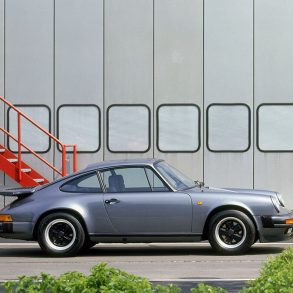
Porsche 911 3.2 Carrera
To E, F, G, H, I, J, K. In 1983 the SC 911 went away and was replaced by the 911 3.2 Carrera. This was the final "classic" 911 before the Type Porsche 964 was introduced in late 1989. A comeback of the Carrera nameplate and new engine.
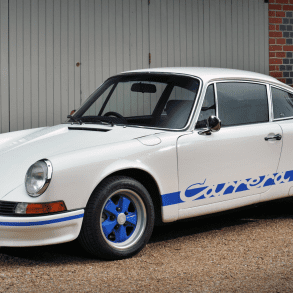
Porsche 911 RS Models
Though many see the 1973 Porsche Carrera RS as the quintessential Porsche RS, the iconic badge dates back to 1957, six years before the original 911 was launched. RS 911s are the pinnacle of cars with an eye to track setups.
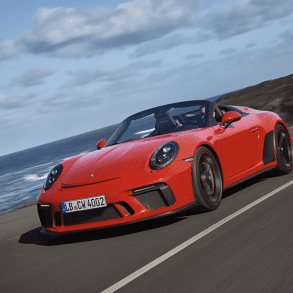
Porsche 911 Speedster
It started with American sports car importer Max Hoffman who saw a hole in the Porsche lineup for a stripped down version of the sports car that could function both for regular use and for an occasional trip to the race track.
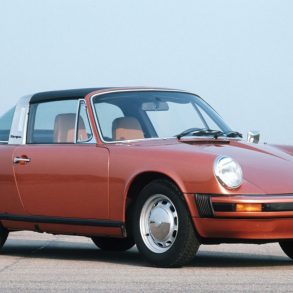
Porsche 911 Targa
Porsche introduced the 911 Targa at the International Motor Show in Frankfurt in September 1965. The Targa is neither a cabriolet nor a coupé, neither a hard top nor a saloon. Since then the Targa has its place for open top fans.
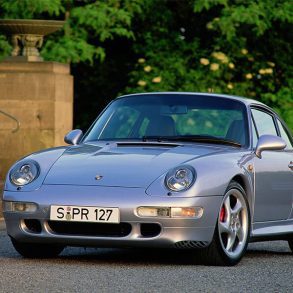
Porsche 911 Turbo
At the 1973 Porsche unveiled the 911 Turbo, and by 1974, it was racing a new 2.1-liter Carrera RSR Turbo on a regular basis. It was a solid proof of concept that led to the first 911 Turbo. Since then the Turbo has sat at the top of the 911 range.
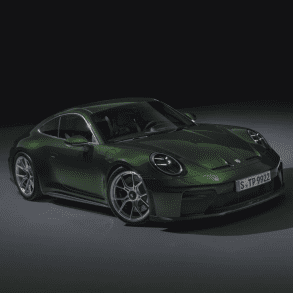
Porsche 911 GT3
The GT3, introduced in 1999, is named after the Fédération Internationale de l'Automobile (FIA) Group GT3 class, in which its racing counterpart was designed to compete. Since then we have seen the GT3 hit the sweet spot in terms of 911 high-performance models. Our favorite.
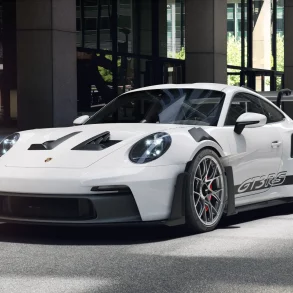
Porsche 911 GT3 RS
Take a GT3 and put it on a crash diet, prep it for more track work and you have the Carrera RS. In 1995, Porsche launched the 993-generation Carrera RS. Porsche created the 993 Carrera RS primarily for homologation purposes. Since then we've seen more extreme RS models from Porsche.
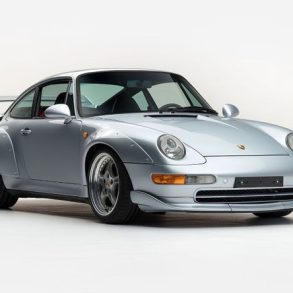
Porsche 911 GT2
The Porsche 911 GT2 is a high-performance sports car built by the German automobile manufacturer Porsche from 1993 to 2009, and then since 2010 as the GT2 RS. Based on the 911 Turbo, and uses a similar twin-turbocharged engine, but features numerous upgrades across the board.
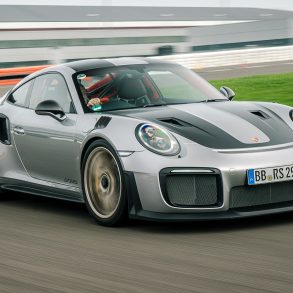
Porsche 911 GT2 RS
The GT2 (now GT2 RS) is the most expensive and fastest model among the 911 lineup. The first GT2 RS came in 2010, conceived around 2007 as a skunk-works effort that was started as an attempt to to beat the new Nissan GT-R's lap times around Nurburgring's Nordschleife.
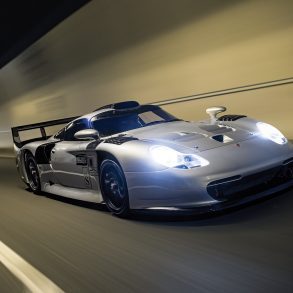
Porsche 911 GT1
With its carbon monocoque chassis, extreme aerodynamics and mid-engined layout, the Porsche 911 GT1-98 won Le Mans (Porsches 16th overall victory) and cemented its place in history. The street version was known as the ‘Strassenversion’ and is considered the most fierce and rarest 911 ever).
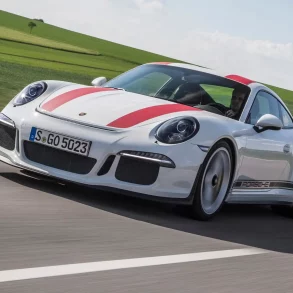
Porsche 911 R
In 2016, Porsche unveiled a limited production 911 R based on the GT3 RS. Production was limited to 991 units worldwide. It had the high-revving 4.0 L naturally aspirated flat six from the 991 GT3 RS and a six-speed manual transmission. Best 911 ever?
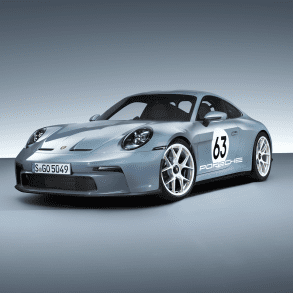
Porsche 911 S/T
The S/T's name pays homage to the special race versions of the 911 S produced from 1969, which were known internally as the 911 ST. The Porsche 911 S/T is a limited-edition sports car that combines the best features of the 911 GT3 and 911 GT3 RS.
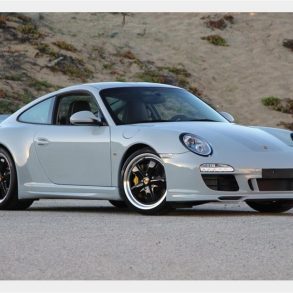
Porsche 911 Sport Classic
The 911 Sport Classic was predominantly inspired by two legends – the very first 911 (1964-1973) and the 911 Carrera RS 2.7 (1972). The direct influence of the original model of the 911 can be seen in the Pepita fabric of the door panels and seat centres.
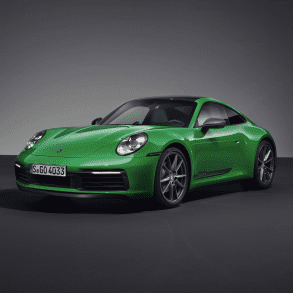
Porsche 911 T
Although it was also available as a Targa version, the T in the 911 T from 1967 stood for “Touring” – and hence for a less expensive entry-level version of the classic vehicle with a weaker engine. The modern version takes that same spirit and applies it to the current range.
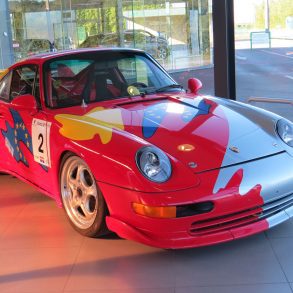
Porsche 911 Carrera Cup
Carrera Cup is a number of one-make racing by Porsche series competed with, initially Porsche 911 Carrera Cup, then later 911 GT3 Cup cars. The cars are specifically built by Porsche for one-make racing, but are visually and mechanically quite similar to road-registrable 911s.
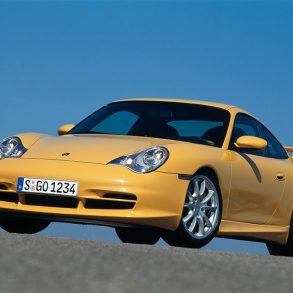
Porsche 911 GT Cars
Gran Turismo (GT) signifies a sportier version of the basic model; the designation has its origins in motor sport since it was to homologate cars for GT class. Used for the first time with the 356 A 1500 GS Carrera GT, Porsche now uses it for its most track-focused machines.
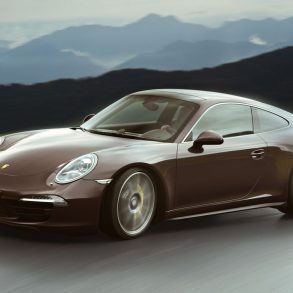
Porsche 911 Carrera 4
Models with all-wheel drive. Carrera, S, and GTS models can be had with this all-wheel drive option. This designation isn't used on the Targa 4, 4S, 4GTS or Turbo models even though they are all all-wheel drive models.
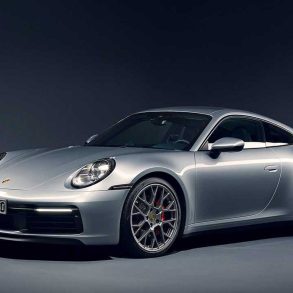
Porsche 911 Carrera S
S for “Super” or “Sport”: a version with a more powerful engine. Today the S consistently stands for “Sport” and, in addition to the extra-sporty engine, additionally includes enhancements compared with the basic model.
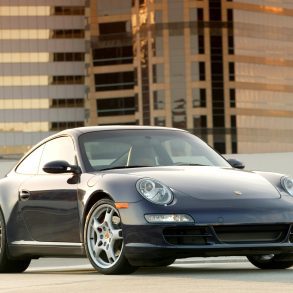
The Carrera
Originally, “Carrera” was the name of the Type 547 four-camshaft engine. Porsche later used it for the most powerful versions. Carrera has become established as a synonym for the 911 range. The name is from the Carrera Panamericana.
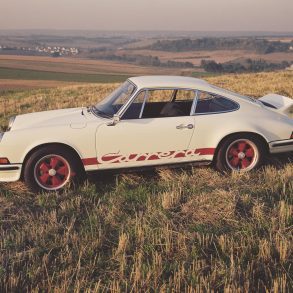
Carrera RS
The RS (stands for RennSport[=racing sport]) and is a street-legal model that has been derived from the motor racing version. The designation is, however, also used for particularly sporty models, e.g. the 911 RS America.
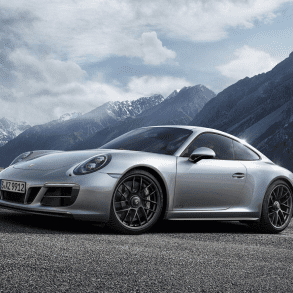
Porsche 911 Carrera GTS
GTS stands for Gran Turismo Sport and is originally a homologation class from motor racing. The 904 Carrera GTS received this epithet for the first time in 1963. GTS is currently used to designate the especially sporty Porsche model series.
Porsche Supercars & Hypercars
Supercars are the pinnacle of automotive performance, design and technology. Our friends at Porsche are no strangers to building some of the most desirable supercars ever. The Porsche 959 was a technological marvel of the 80s, showcasing all-wheel drive and twin-turbo power, while the 911 GT1, a homologation special, brought Le Mans racing tech to the street. The Carrera GT, with its screaming V10 and raw driving experience, offered a visceral thrill, and the 918 Spyder, a hybrid hypercar, ushered in a new era of performance and efficiency for Porsche's supercars.
Porsche 959
Porsche 911 GT1
Porsche Carrera GT
Porsche 918 Spyder
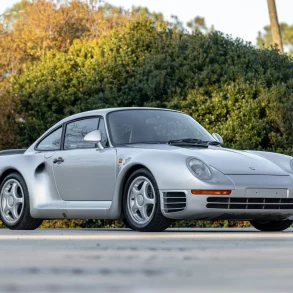
Porsche 959
1986 - 1993
Porsche's first supercar was the Porsche 959 was developed and manufactured by Porsche from 1986 to 1993. The car was initially developed to function solely as a B rally car. When it came our in 1986, the Porsche 959 was immediately identified as the world’s fastest street-legal production car. The twin-turbo was capable of producing a top speed of 195 mph.
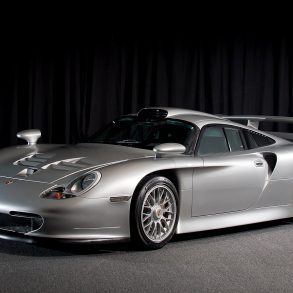
Porsche 911 GT1
1996 - 1999
Porsche developed two fully road-legal versions, dubbed "911 GT1 Straßenversion". These two cars feature 993 era front headlights. A further 20 units were built in 1997 with 996 era front headlights. A single car was built in 1998 to homologate the all-new racing version under the new FIA regulations. Most argue that these are the most hardcore Porsche cars ever made.
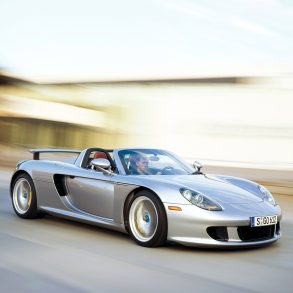
Porsche Carrera GT
2003 - 2007
The production version of the Carrera GT was powered by a 5.7- liter V10 engine that produced 603 horsepower (450 kW). Porsche promoted the cars performance capabilities, boasting a 0-60 mph time of just 3.5 seconds and a top speed of 205 mph (330 km/h). The only available transmission was a six-speed manual. The rawest and best of the iconic supercars.
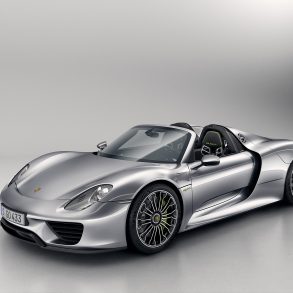
Porsche 918 Spyder
2013 - 2015
Simply stated, the Porsche 918 Spyder was a mid-engined, plug-in hybrid supercar. The Spyder was powered by a naturally-aspirated 4.6-liter V8 engine that was capable of producing 608 horsepower (453 kW). Paired with this engine are two electric motors that deliver an additional 279 horsepower each, for a cumulative combined total of 887 horsepower.
Porsche Cayenne
In 2002, Porsche gave us their first SUV, which would also be the first production Porsche with four doors. No longer just a sports-car maker, it transformed Porsche into a volume manufacturer and a massive money maker. The original Porsche Cayenne shared its platform with the Volkswagen Touareg, but had plenty of Porsche engineering underneath. Since then are generation number three of the Cayenne and it continues to be the leader in its field in terms of overall performance and luxury.
1st Generation Cayenne (955/957)
Porsche Cayenne (955)
Porsche Cayenne Turbo
Porsche Cayenne S
Porsche Cayenne
Porsche Cayenne GTS Design Edition 3
Porsche Cayenne Turbo S
Porsche Cayenne S Titanium Edition
Porsche Cayenne S Transsyberia
Porsche Cayenne (957)
Porsche Cayenne Turbo
Porsche Cayenne Turbo S
Porsche Cayenne S
Porsche Cayenne
Porsche Cayenne GTS
Porsche Cayenne GTS Design Edition 3
Porsche Cayenne Diesel
Porsche Cayenne S Transsyberia
2nd Generation Cayenne (958)
Porsche Cayenne (958.1)
Porsche Cayenne
Porsche Cayenne S
Porsche Cayenne S Hybrid
Porsche Cayenne Turbo
Porsche Cayenne Turbo S
Porsche Cayenne Diesel
Porsche Cayenne Diesel S
Porsche Cayenne GTS
Porsche Cayenne (958.2)
Porsche Cayenne
Porsche Cayenne S
Porsche Cayenne S E-Hybrid
Porsche Cayenne GTS
Porsche Cayenne Turbo
Porsche Cayenne Turbo S
Porsche Cayenne Diesel
Porsche Cayenne Diesel S
3rd Generation Cayenne (9YA)
Porsche Cayenne (9YA.1/9YA.2)
Porsche Cayenne
Porsche Cayenne E-Hybrid
Porsche Cayenne S
Porsche Cayenne GTS
Porsche Cayenne Turbo
Porsche Cayenne Turbo Coupe
Porsche Cayenne Platinum Edition
Porsche Cayenne GTS Coupe
Porsche Cayenne Coupe
Porsche Cayenne E-Hybrid Coupe
Porsche Cayenne S Coupe
Porsche Cayenne Turbo S E-Hybrid Coupe
Porsche Cayenne Turbo GT
Porsche Cayenne Turbo S E-Hybrid
Porsche Cayenne Generations
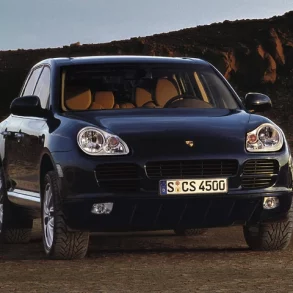
Porsche Cayenne (955/957)
2003 - 2010
The first gen of Cayenne is really two sub-generations. They are known as the Cayenne 955 and the Cayenne 957. The Cayenne 955 was the original launch Cayenne and sold from 2002 until 2007. Models included the base Cayenne, Cayenne S, Cayenne Turbo, and Cayenne Turbo S models. Porsche launched the 2008 Cayenne model, updated and refreshed and known at the Cayenne 957. The Cayenne 957 covers all Cayennes sold from 2008 to 2010 model years, and includes those same previous models and introduced the Cayenne GTS and several limited edition models. The 957 was not a big update, consisting mainly of a mild facelift and some better technologies and interior design.
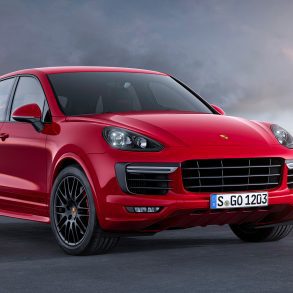
Porsche Cayenne (958)
2010 - 2017
The second-gen Cayenne was introduced as a 2011 MY update to the successful first gen. The 958 ran through till the 2018 model year, with the two versions known as the 958.1 and 958.2. The big change model-wise this generation was the introduction of headline-grabbing Cayenne S Hybrid. The Cayenne was facelifted for 2015. The 958.2 Cayenne saw major changes in terms of the engine power plants, with the V8 option going away entirely on the popular Cayenne S and GTS. The replacement is a powerful and torquey twin-turbocharged 3.6 L V6, providing both better performance and improved efficiency. The Turbo and Turbo S remain the sole V8 Cayenne options, both of which still weigh in with 4.8 L and twin-turbochargers.
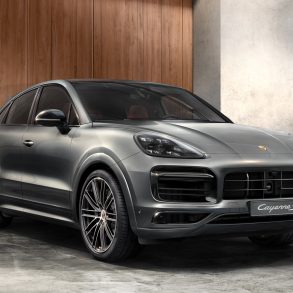
Porsche Cayenne (9YA)
2018 - Present
The third-generation Porsche Cayenne was a complete redesign from top to bottom and was built on the freshly created Volkswagen Group MLB platform. Production began in 2017 as a 2018 onward model year for Europe while USA and rest of the world got the Cayenne as a 2019 model year onward. It is known as the 9YA and has two main body types, known as the 9Y0 for the SUV and 9Y3 for the new Coupe body style. In April 2023, the Cayenne was given a mid-cycle refresh for the 2024 model year. Notable changes include a new dashboard layout, a fully digital gauge cluster, and minor exterior restyling for the hood, headlights, bumpers, fenders, and trunk. Powertrains were also upgraded, and the Cayenne S gains back its V8 engine.
Porsche Panamera
The Porsche Panamera, introduced in 2009, boldly expanded the Porsche lineup beyond its sports car heritage, offering a luxurious and practical four-door grand tourer. Blending the brand's signature performance with surprising interior space and comfort, the Panamera catered to a new segment of buyers seeking a high-performance sedan with Porsche's unmistakable DNA. Available in a variety of configurations, including rear-wheel and all-wheel drive, potent V6 and V8 engines, and even a hybrid powertrain, the Panamera quickly established itself as a formidable contender in the luxury sedan market, proving that practicality and exhilarating performance could coexist beautifully.
1st Generation Panamera (970)
Porsche Panamera (970.1)
Porsche Panamera 4S
Porsche Panamera Turbo
Porsche Panamera S
Porsche Panamera
Porsche Panamera 4
Porsche Panamera Diesel
Porsche Panamera S Hybrid
Porsche Panamera Turbo S
Porsche Panamera GTS
Porsche Panamera Platinum Edition
Porsche Panamera (970.2)
Porsche Panamera 4S
Porsche Panamera GTS
Porsche Panamera S E-Hybrid
Porsche Panamera Turbo
Porsche Panamera Turbo Executive
Porsche Panamera Turbo S
Porsche Panamera Turbo S Executive
Porsche Panamera 4
Porsche Panamera
Porsche Panamera Diesel
Porsche Panamera S
Porsche Panamera 4S Executive
Porsche Panamera Edition
2nd Generation Panamera (971)
Porsche Panamera (971.1)
Porsche Panamera GTS Sport Turismo
Porsche Panamera
Porsche Panamera 4
Porsche Panamera 4 Sport Turismo
Porsche Panamera 4 E-Hybrid
Porsche Panamera 4 E-Hybrid Sport Turismo
Porsche Panamera 4S
Porsche Panamera 4S Sport Turismo
Porsche Panamera 4S Diesel
Porsche Panamera 4S Diesel Sport Turismo
Porsche Panamera Turbo (2017 – 2020)
Porsche Panamera Turbo Sport Turismo
Porsche Panamera Turbo S E-Hybrid
Porsche Panamera Turbo S E-Hybrid Sport
Porsche Panamera GTS
Porsche Panamera (971.2)
Porsche Panamera Turbo S Sport Turismo
Porsche Panamera
Porsche Panamera 4
Porsche Panamera 4 Executive
Porsche Panamera 4S E-Hybrid Executive
Porsche Panamera 4 Sport Turismo
Porsche Panamera 4 E-Hybrid
Porsche Panamera 4 E-Hybrid Executive
Porsche Panamera 4 E-Hybrid Sport Turismo
Porsche Panamera 4S
Porsche Panamera 4S Executive
Porsche Panamera 4S Sport Turismo
Porsche Panamera 4S E-Hybrid Sport Turismo
Porsche Panamera GTS
Porsche Panamera GTS Sport Turismo
Porsche Panamera Turbo S
Porsche Panamera Turbo S Executive
Porsche Panamera Turbo S E-Hybrid
Porsche Panamera Turbo S E-Hybrid Exec
Porsche Panamera Turbo S E-Hybrid Sport
3rd Generation Panamera (976)
Porsche Panamera (976.1)
Porsche Panamera
Porsche Panamera 4
Porsche Panamera Turbo E-Hybrid
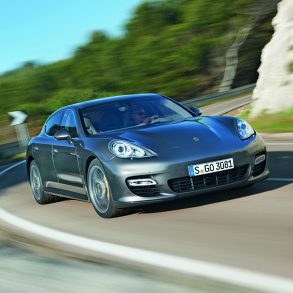
Porsche Panamera 1st Gen (970)
2009 - 2016
The first generation Porsche Panamera (970), launched in 2009 and produced until 2016, was met with mixed reactions regarding its design, particularly the rear end, but its driving dynamics and performance were lauded. This generation offered a wide array of engine choices, ranging from a base V6 to the powerful Turbo S, and introduced a hybrid variant, the Panamera S E-Hybrid. Despite some initial skepticism, the 970 successfully established the Panamera as a viable alternative to established luxury sedans.
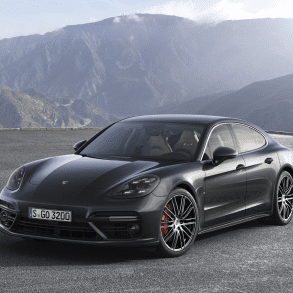
Porsche Panamera 2nd Gen (970)
2016 - 2024
The second generation Porsche Panamera (971), unveiled in 2016 and currently in production, significantly refined the formula established by its predecessor. Addressing the design criticisms of the first generation, the 971 featured a sleeker, more athletic profile with a sloping roofline that more closely echoed the iconic 911. Beyond aesthetics, the 971 introduced a new platform, enhanced powertrains with improved performance and efficiency, and a state-of-the-art interior with a cutting-edge infotainment system.
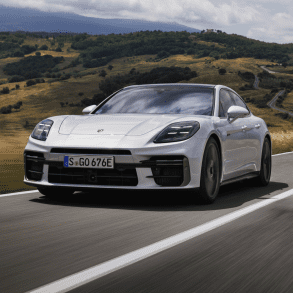
Porsche Panamera 3rd Gen (976)
2025 - Present
The third generation Porsche Panamera (972), revealed in late 2023, represents a significant evolution rather than a complete revolution of the successful model. While built on a modified version of the 971's MSB platform, it features updated styling cues, most notably in the front and rear fascias, aligning it more closely with Porsche's current design language. The major focus of this generation is on electrification, with heavily revised hybrid powertrains offering increased electric range, alongside updated internal combustion engines.
Porsche Macan
The Porsche Macan, introduced in 2014, burst onto the scene as a compact luxury crossover SUV that injected a dose of Porsche's signature performance into a rapidly growing segment. Smaller and more agile than its Cayenne sibling, the Macan offered a compelling blend of practicality and driving excitement, making it an instant hit. With its sharp handling, powerful engine options, and luxurious interior, the Macan proved that an SUV could be both functional and fun to drive, embodying the spirit of a sports car in a versatile package. It quickly became one of Porsche's best-selling models, attracting a new generation of customers to the brand and redefining expectations for the compact luxury SUV. Now, in its second generation and with an all-electric powertrain, the Porsche Macan Electric is taking things to a whole new level.
1st Generation Macan (95B)
Porsche Macan (95B.1) (2015 - 2018)
Porsche Macan
Porsche Macan S
Porsche Macan Turbo
Porsche Macan S Diesel
Porsche Macan GTS
Porsche Macan Turbo with Performance
Porsche Macan (95B.2) (2019 - 2021)
Porsche Macan
Porsche Macan S
Porsche Macan GTS
Porsche Macan Turbo
Porsche Macan (95B.3) (2022 - Present)
Porsche Macan
Porsche Macan S
Porsche Macan GTS
Porsche Macan T
2nd Generation Macan (Electric)
Porsche Macan Electric
Porsche Macan 4 Electric
Porsche Macan 4S Electric
Porsche Macan Turbo Electric
Porsche Macan Generations
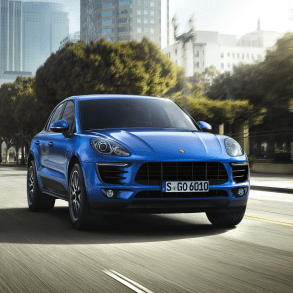
Porsche Macan 1st Gen (95B.1)
2014 - 2015
The production version of the Macan was unveiled at the 2013 Los Angeles Auto Show and 2013 Tokyo Motor Show. European models went on sales in spring 2014 and the initial line-up of models included the Macan S and Macan Turbo. US models arrived at U.S. dealerships in late spring 2014 as 2015 model year vehicle. Early models included Macan S, Macan Turbo. Porsche subsequently released a base Macan for select Asian markets and the United Kingdom.
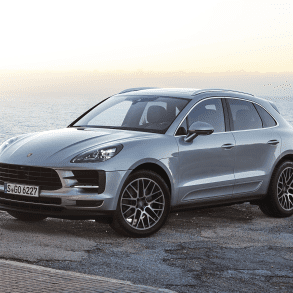
Porsche Macan 1st Gen (95B.2)
2019 - 2021
The 2019 model year Macan received its European debut at the 2018 Paris Motor Show. Changes to the previous model include an overhauled chassis, a gasoline particulate filter fitted as standard, a new front and rear fascia with LED head- and tail-lights as standard, new exterior colors and wheel designs, and a redesigned interior. Overall, this Macan update heralded sleeker looks, lower ride profile, enhanced performance and new interior. Porsche never rests.
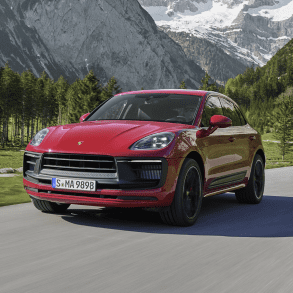
Porsche Macan 1st Gen (95B.3)
2022 - Present
While this isn’t a full redesign, the Macan got some notable tweaks to its exterior, interior and mechanicals for the 2022 model year. Across the 2022 Macan lineup, Porsche is giving buyers more powerful engine options compared to 2021 models. Base models got 261 hp. The Macan S gets the engine from the 2021 Macan GTS and the GTS, gets the twin-turbo 2.9-liter V-6 from the 2021 Macan Turbo. We also a new model, the Porsche Macan T for the first time.
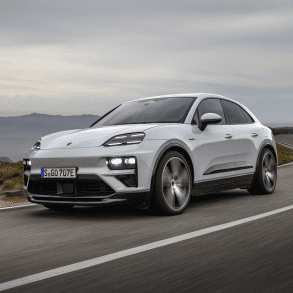
Porsche Macan Electric
2025 - Present
The Porsche Macan Electric represents Porsche's foray into the electric compact SUV segment, blending the practicality and popularity of the Macan with cutting-edge EV technology. It offers impressive performance figures, with dual-motor all-wheel drive and overboost power for rapid acceleration. The Macan Electric also boasts a long driving range and fast charging capabilities thanks to its 800-volt architecture. Set a new standard for electric SUVs.
Porsche Macan Variants
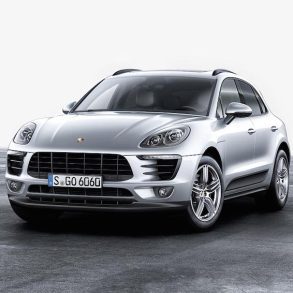
Porsche Macan
2017 - Present
Using a reworked version of the Volkswagen Group's 2.0-litre inline-four EA888 Gen 3 engine, the base Macan was a solid choice for buyers. In July 2018, Porsche unveiled a new facelift for the Macan range for the 2019 model year. It included refreshed exterior styling that includes updated front and rear bumpers, new taillamps and new wheel designs. The base Macan receives a 248-hp turbocharged four-cylinder. There was another update for 2021.
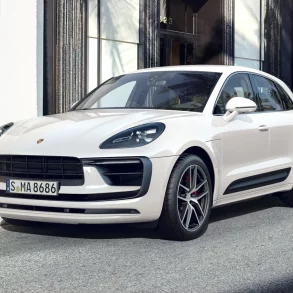
Porsche Macan S
2015 - Present
The Macan S was part of the initial launch and it was equipped with a 3.0-liter V6 twin turbo engine delivering 335 hp. The Macan got important upgrades for the 2019 model, featuring new front lights with LED headlights as standard and three-dimensional LED lights in the rear. The 3.0-liter turbocharged V6 engine got 348 horsepower. There was another visual update again in 2021, and the engine now has power of 375hp.
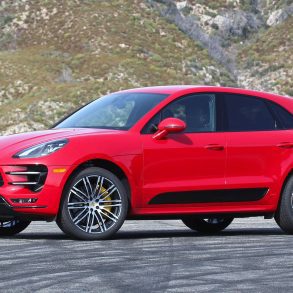
Porsche Macan Turbo
2016 - 2021
The top model in the Porsche Macan lineup was the Macan Turbo. It launched in 2016 with a 3.6 liter twin-turbo V6 good for 395 bhp. It got an update in 2020 after a one-year hiatus, with more power, more speed, and more standard equipment. It swapped its twin-turbocharged 3.6-liter V-6 for a new twin-turbo 2.9-liter V-6 shared with versions of the larger Cayenne SUV. By 2021 the Turbo Macan was gone from the range, replaced by the GTS as the top model.
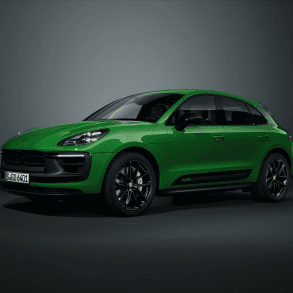
Porsche Macan GTS
2017 - Present
For 2017, Porsche added the Macan GTS trim to the lineup. The new Macan GTS gets a higher-output version of the twin-turbo V-6 that powers the S model. It also gets tweaked performance-oriented chassis, unique design elements and additional standard equipment. The GTS returned to the lineup for 2020 after a year off. Its twin-turbo 2.9-liter V-6 makes 375 hp. For 2022, the Macan GTS is the beneficiary of the engine from the outgoing Macan Turbo.

Porsche Macan T
2023 - Present
The 2023 Porsche Macan T brings touring style to the Macan. Positioned between the base Macan and the midrange Macan S, the Macan T packs the same 2.0-liter turbocharged four-cylinder found in the entry-level mode. The German automaker says the powertrain is good for a 5.8-second 0-to-60-mph dash. Unsurprisingly, those are the same factory performance estimates as the standard Macan when fitted with the optional Sport Chrono.
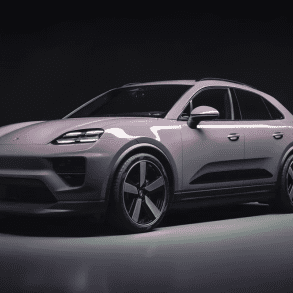
Porsche Macan Electric
2025 - Present
The Porsche Macan Electric kicks off our Macan Electric trims comparison. This model is the entry-level option but includes impressive features you won't find on many other vehicles. Enjoy standard rear-wheel drive and a single permanently synchronous electric motor setup that makes up to 355 horsepower and 415 pound-feet of torque with Overboost Power and Launch Control. Zero to 60 mph in just 5.4 seconds and a top speed of 137 mph.
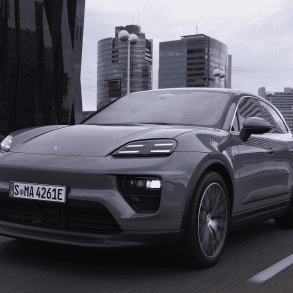
Porsche Macan Electric 4
2025 - Present
This model swaps out the rear-wheel drive system for smooth and steady all-wheel drive, and you'll get access to 402 horsepower with Overboost and Launch Control enabled. This system raises torque to 479 pound-feet and makes the leap from zero to 60 mph in just 4.9 seconds. The Macan 4 Electric is 0.1 inch longer and 0.1 inch shorter in height than its predecessor. Nearly all other specifications remain the same as the base model.
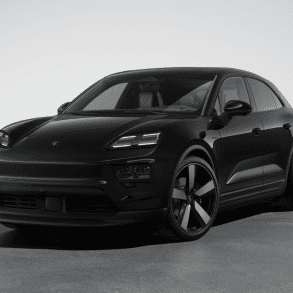
Porsche Macan Electric 4S
2025 - Present
Power and performance beginning to ramp up. The model carries over the all-wheel-drive setup but gets 509 horsepower and 604 pound-feet of torque with Overboost Power and Launch Control. In addition, you'll get a bump in top speed, going from 137 mph to 149 mph, and 0 to 60 mph in 3.9 seconds. With this model, the length and height are restored to the base-model values, which are nearly the same. The same concept applies to the ground clearance.
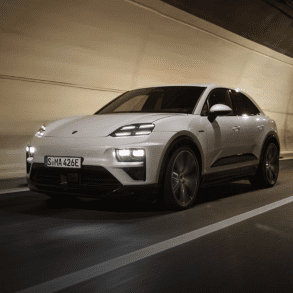
Porsche Macan Electric Turbo
2025 - Present
While some features from the previous models carry over, there are significant swaps and additions for this unprecedented SUV. The all-wheel-drive setup is here, mated with more power – up to 630 horsepower when using Overboost Power with Launch Control and up to 833 pound-feet of torque. Zoom from zero to 60 mph in 3.1 seconds and reach a top speed of 161 mph in this model. Its sporty design matches that of the Macan 4S with some variation. For one, it takes a dip in rear cargo volume.
Porsche Taycan
The Taycan is currently offered as a sedan model and Cross Turismo (wagon-like) model. Models introduced at launch include the high-performance AWD Turbo and Turbo S. The Taycan 4S, a mid-range AWD model with two battery sizes, was added in October 2019. The base RWD model was first announced in July 2020 for China, and then for Europe and US in January 2021. The Cross Turismo models all came out as 2021 model years. A mid-cycle refresh was unveiled in February 2024, for the 2025 model year. Porsche introduced an improved battery chemistry, increasing power density and overall capacity. In addition, the rear traction motor from the Macan BEV was fitted, which is more powerful, more efficient, and weighs less than the prior unit. The Turbo GT powertrain was introduced, which uses the same front motor as the Turbo and Turbo S, with an upgraded rear motor.
Porsche Taycan 4S
Porsche Taycan Turbo
Porsche Taycan Turbo S
Porsche Taycan GTS
Porsche Taycan GTS Sport Turismo
Porsche Taycan (Base) Sport Turismo
Porsche Taycan 4 Cross Turismo
Porsche Taycan 4S Cross Turismo
Porsche Taycan Turbo Cross Turismo
Porsche Taycan Turbo S Cross Turismo
Porsche Taycan (Base)
Porsche Taycan Turbo GT
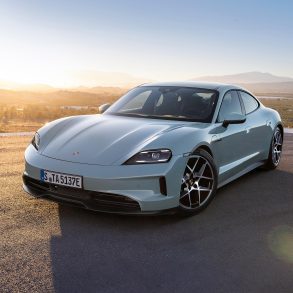
Porsche Taycan
2021 - Present
This entry-level variant in the Taycan lineup is cheaper than a 911 and Panamera, making it an interesting prospect. It gets one less motor than the Taycan 4S and less standard equipment. Horsepower and torque figures change depending on whether you get the standard 79-kWh battery or pay $5780 for the 93.4-kWh Performance Battery Plus. The bigger battery gives you 469 hp and 263 lb-ft of torque when using launch control, or 375 hp in regular operation. In 2022 the base model was released in this new Sport Turismo body style.
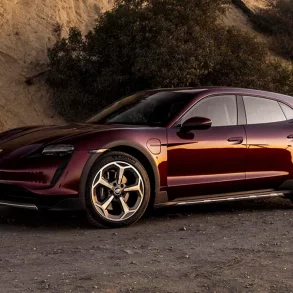
Porsche Taycan 4
2021 - Present
Available as both a sedan and Cross Turismo body style, the Taycan 4 is a solid everyday electric choice. We'd pick the Cross Turismo 4, with a spacious interior and two luggage compartments, providing comfort and convenience for four, the Taycan Cross Turismo body style is more practical than its sedan sibling. Unlike the Taycan sedan, all Cross Turismo models come standard with the larger of the two available battery packs, an 83.7-kWh unit. In the 4, that pack powers the two motors to an available 469 horsepower .
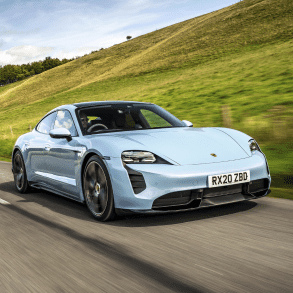
Porsche Taycan 4S
2020 - Present
The Taycan 4S is the sweet spot for Porsche's electric four-door sports car, with more than enough performance for daily driving and enough equipment to feel like it is worth the money. The 4S makes a total of 522 horsepower with its base 79.2-kWh battery pack and 563 horses with the optional one, the 93.4-kWh Performance Battery Plus. Porsche claims a zero-to-60-mph time of 3.8 seconds for the 4S. It comes as both a sedan or with Porsche's Taycan Cross Turismo body.
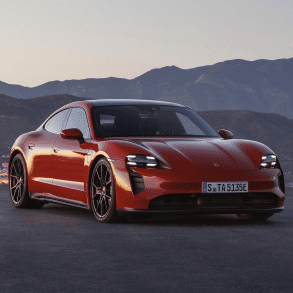
Porsche Taycan GTS
2022 - Present
Most of us have come to know what Porsche’s GTS lineage stands for: a focus on vehicle dynamics while deferring in terms of sheer horsepower to the most powerful in the range; a unique look and a wealth of standard equipment, especially the good performance stuff. Same formula for the Taycan GTS. It has 590 hp and 623 ft lbs. It feels much more rear-driven than the Turbo and has way more engaging handling. The Sport Turismo bodystyle is unique the to Taycan GTS for U.S buyers. It is the sexiest bodystyle in the range.
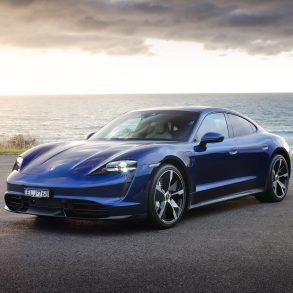
Porsche Taycan Turbo
2020 - Present
It is expensive, it is fast and it is exceptional. The Porsche Taycan Turbo shows us that Porsche's electric future is going to be great for drivers. The Taycan Turbo feels even relentlessly rapid at any speed and the best part is that it really feels like a Porsche from behind the wheel. The Turbo has the same 93.4kWh battery stack as the Turbo S, and the same 614bhp power output. But when you’re going for it in Performance mode, the Turbo’s overboost power and torque are reduced compared with the Turbo S. It means the Turbo is a bit slower to 60 mph.
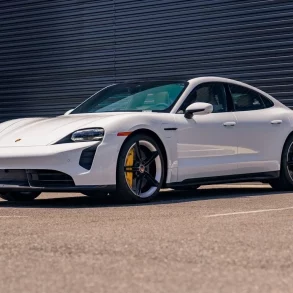
Porsche Taycan Turbo S
2020 - Present
The Porsche Taycan Turbo S is pumping out 750hp and 774lb-ft tq from 93 kwH battery and 2 electric motors. The Turbo S is clocked at a super-fast 2.6 seconds for the 0-60 mph. The performance is mind-bogglingly quick and it is utterly relentless at any speed. But most impressive is just how the Taycan Turbo S drives through the bends, how it feels when moving going quickly. It feels like a Porsche. On the inside, it is modern, luxurious and feels like the future. We love everything about the Taycan Turbo S except the price. It ain't cheap.
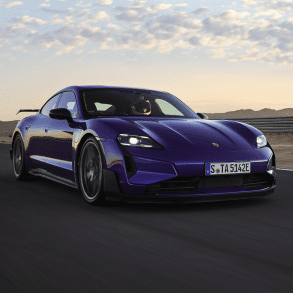
Porsche Taycan Turbo GT
2024 - Present
Porsche’s GT division have got their hands on a Taycan and produced the most powerful production Porsche ever. This, the Taycan Turbo GT, is Porsche’s new flagship electric car that will take its place as one of the world’s fastest EVs and go head to head with the Tesla Model S Plaid. Laying down a 7:07.55 lap of the Nürburgring, the Taycan Turbo GT now has the record as the fastest four-door production EV on the circuit, beating out the Tesla and only 2.25 seconds slower than the mighty Rimac Nevera. The top of the electric supercar heap?


